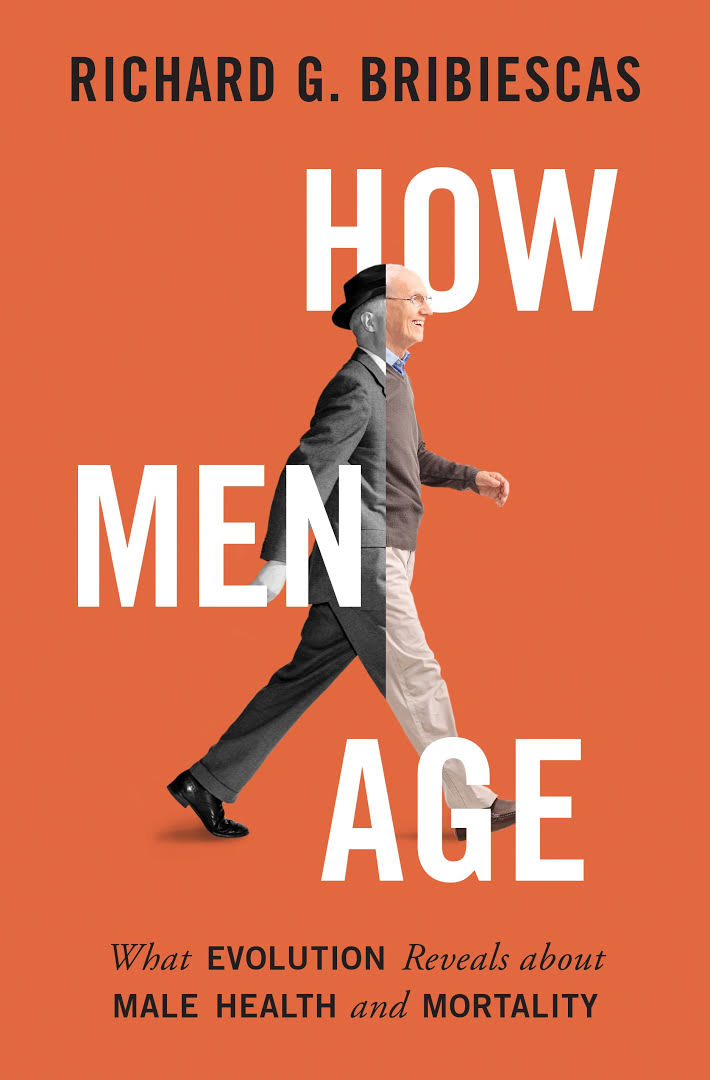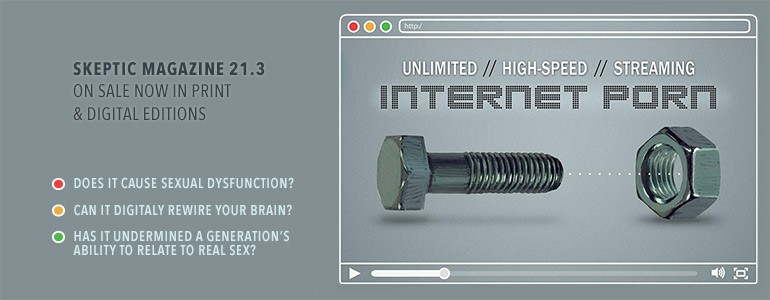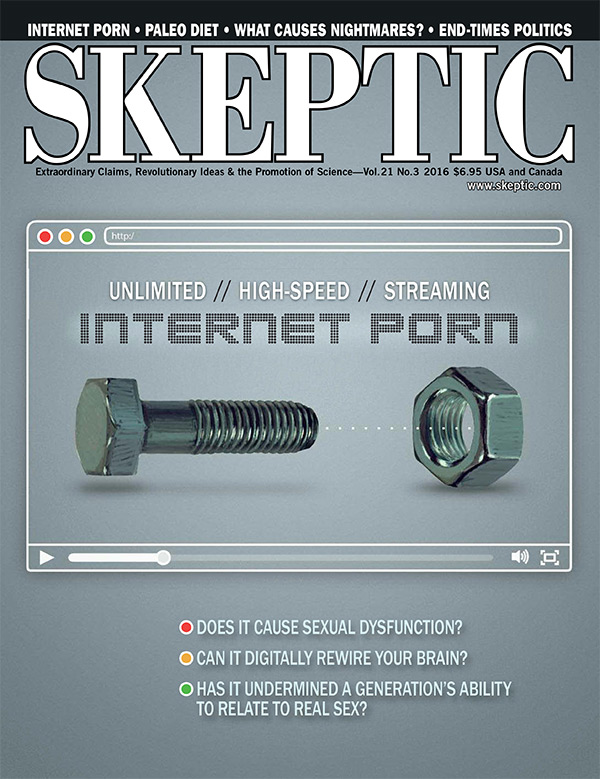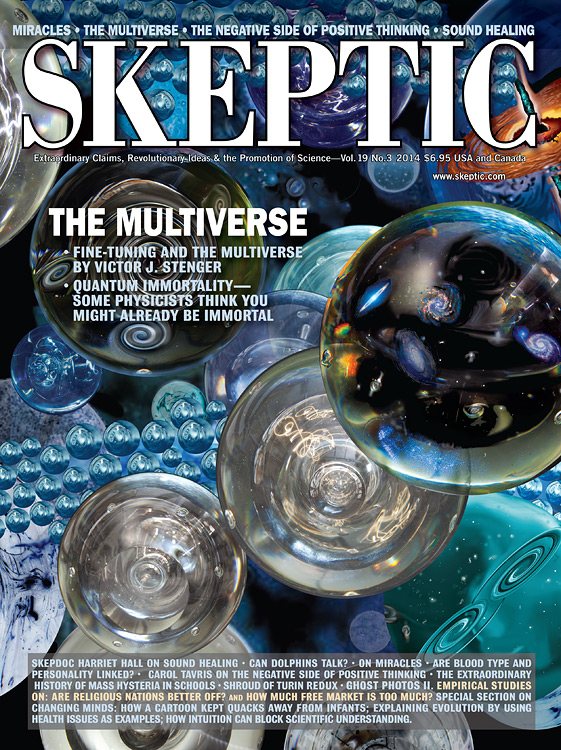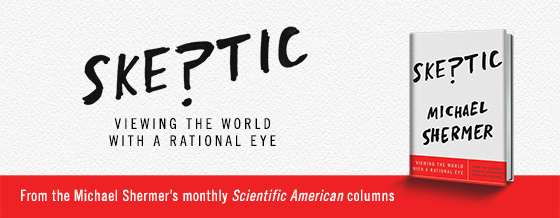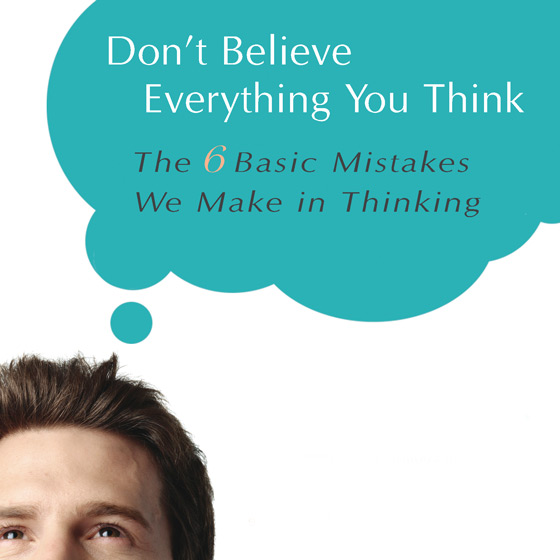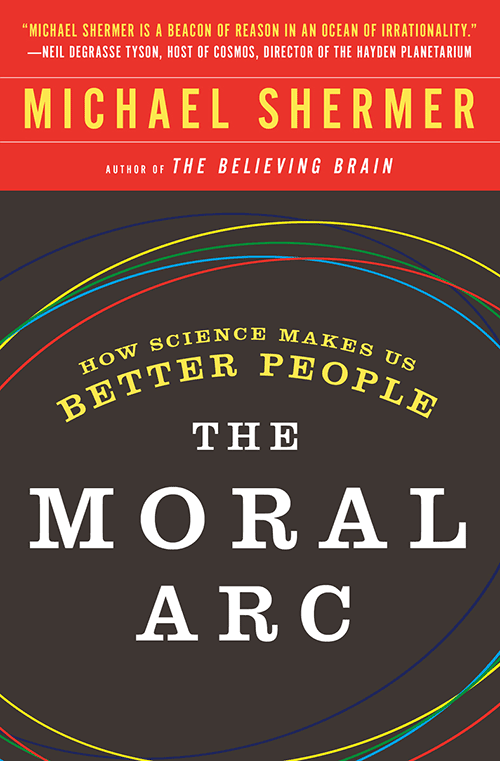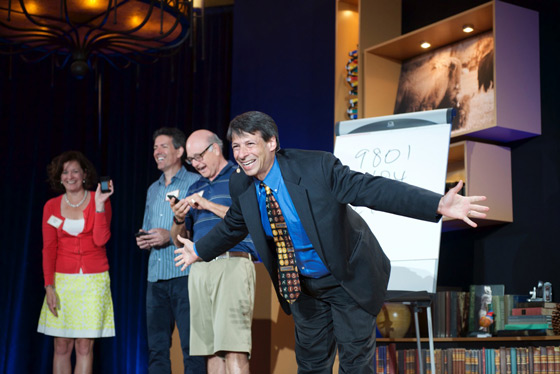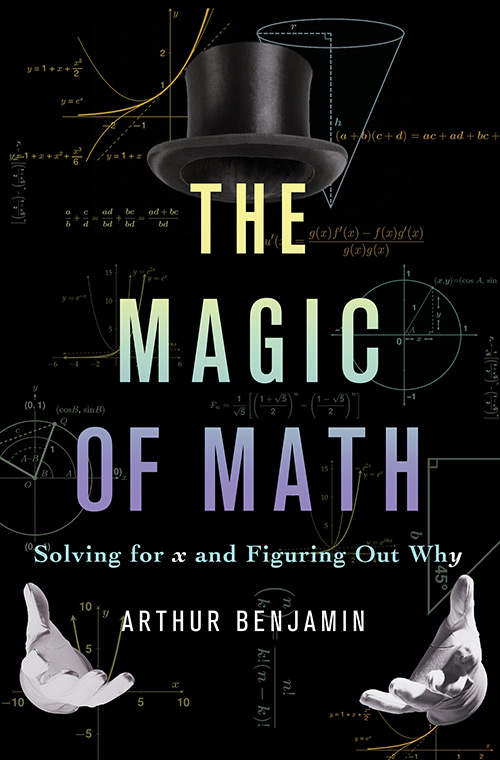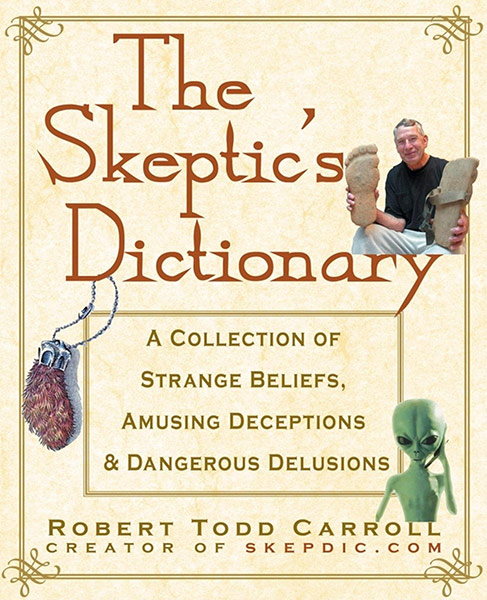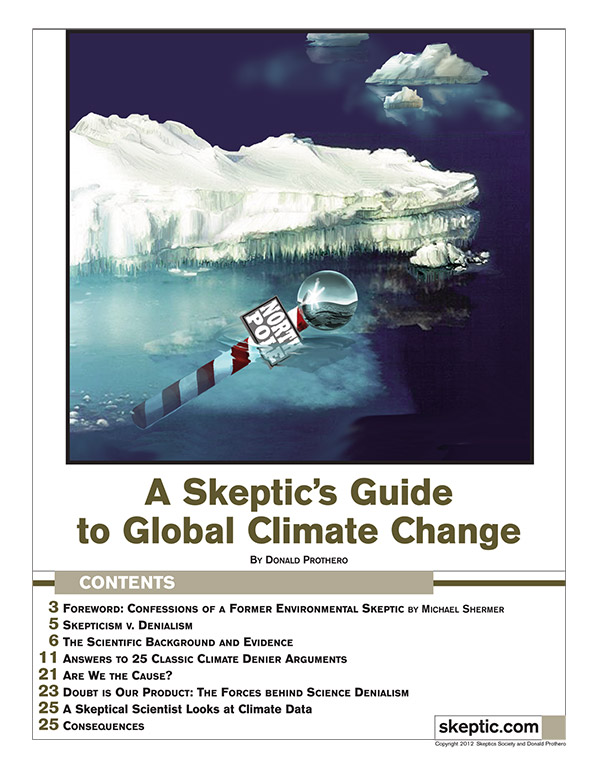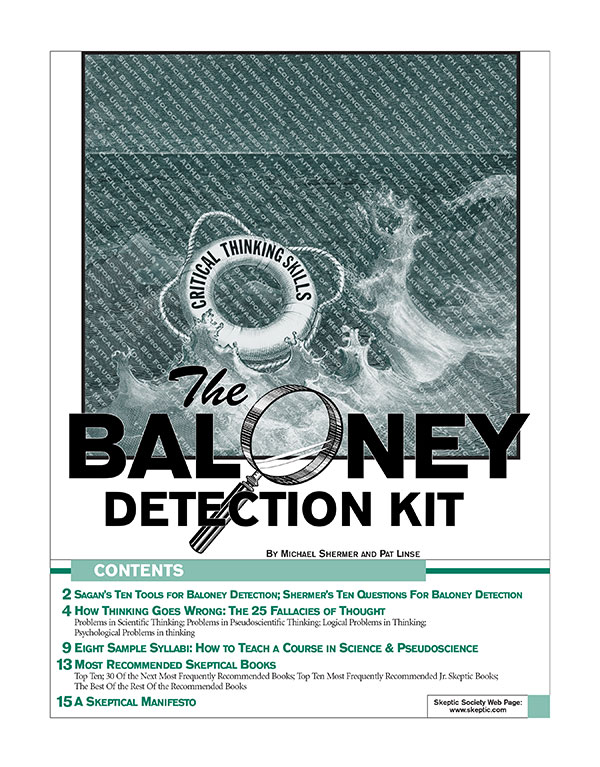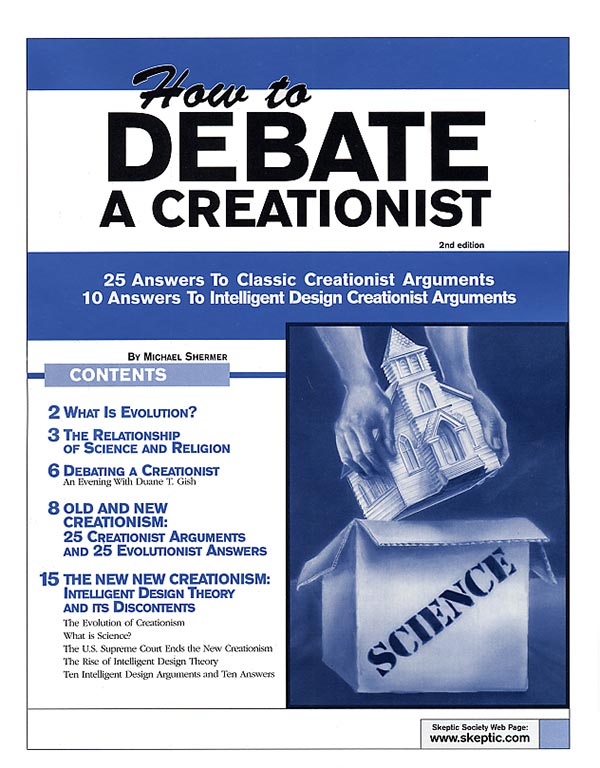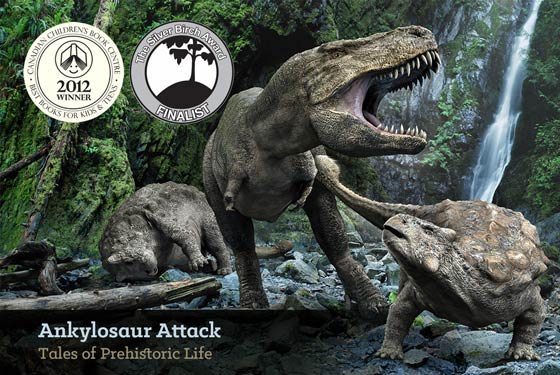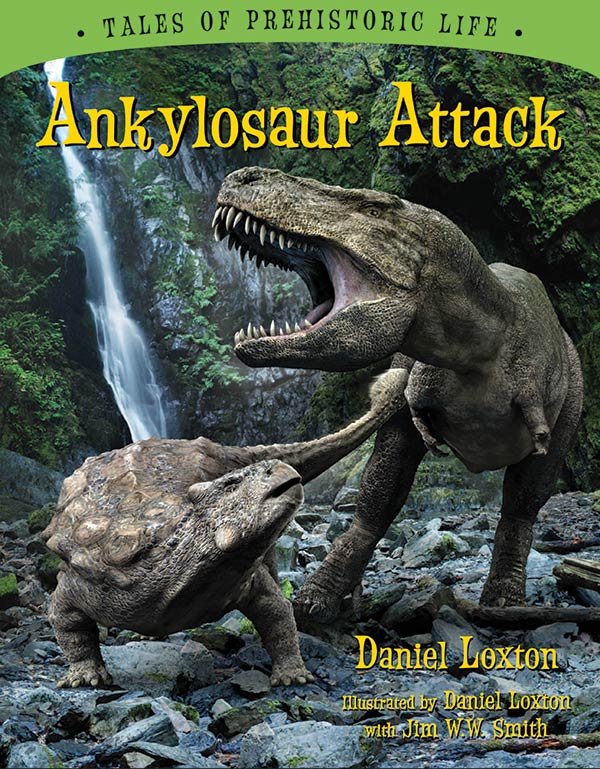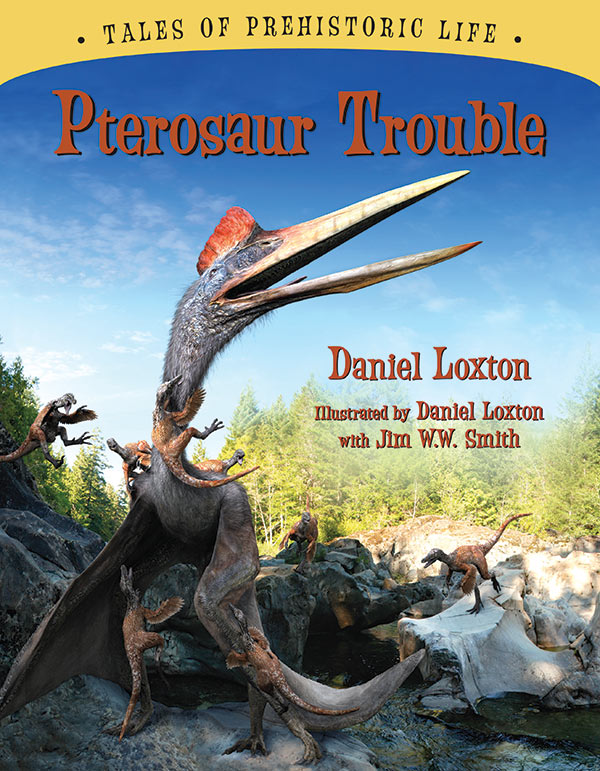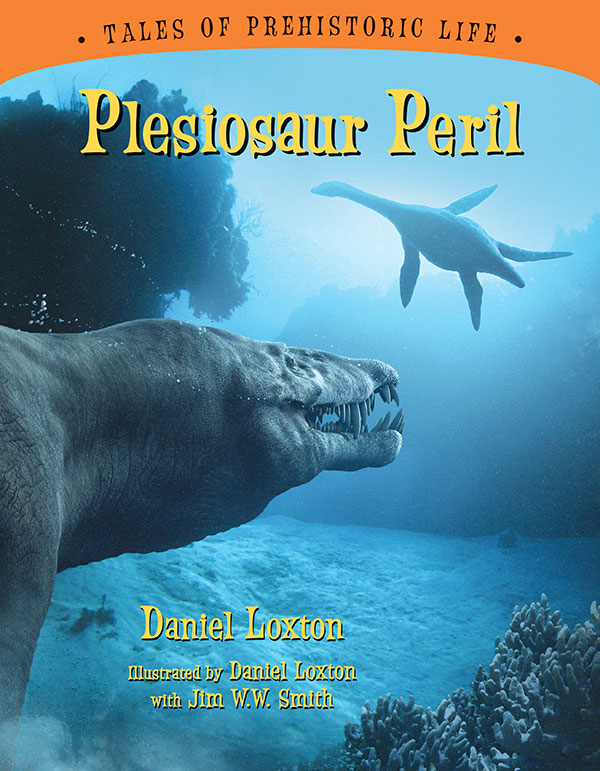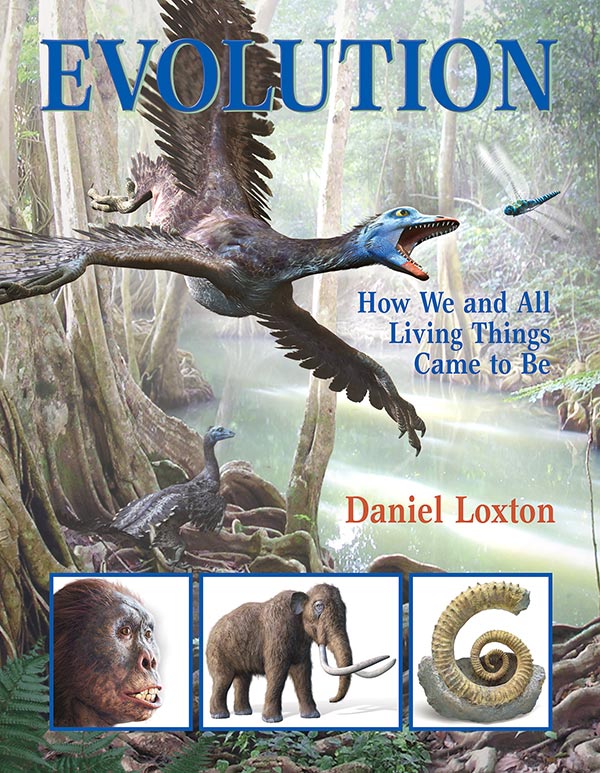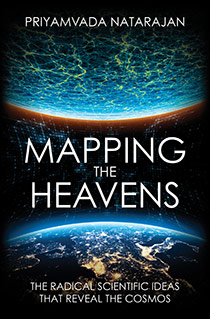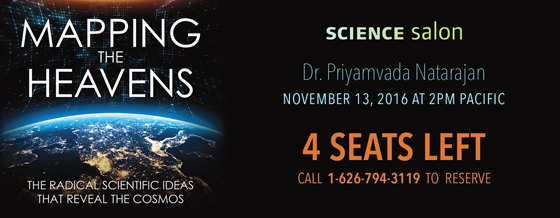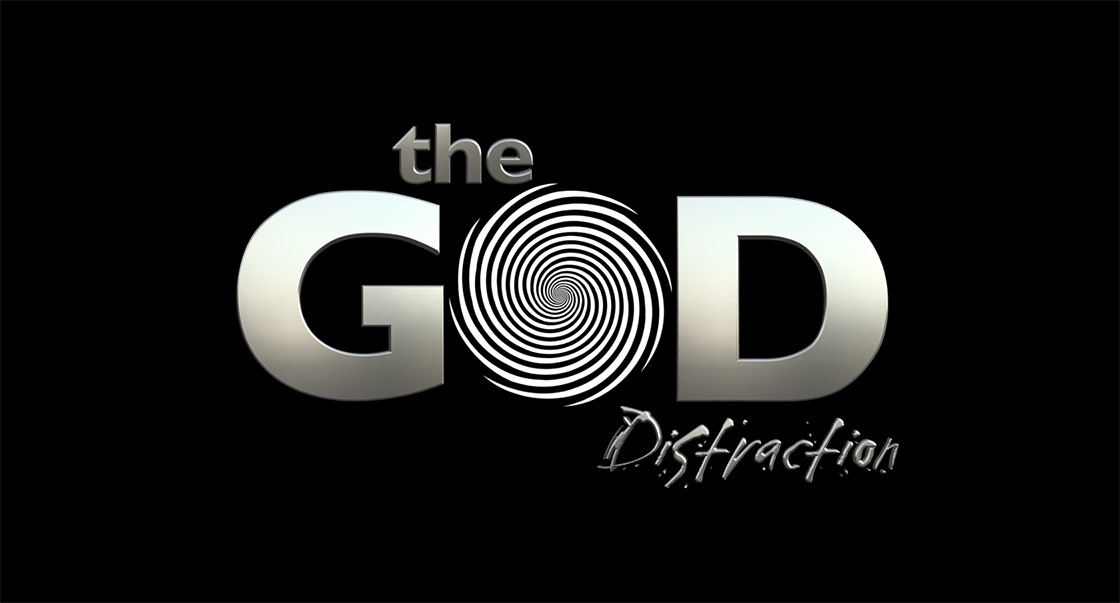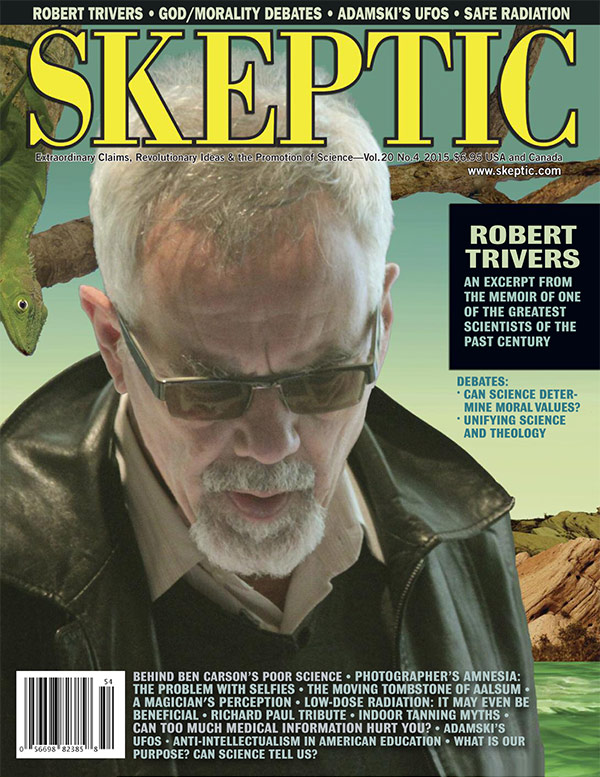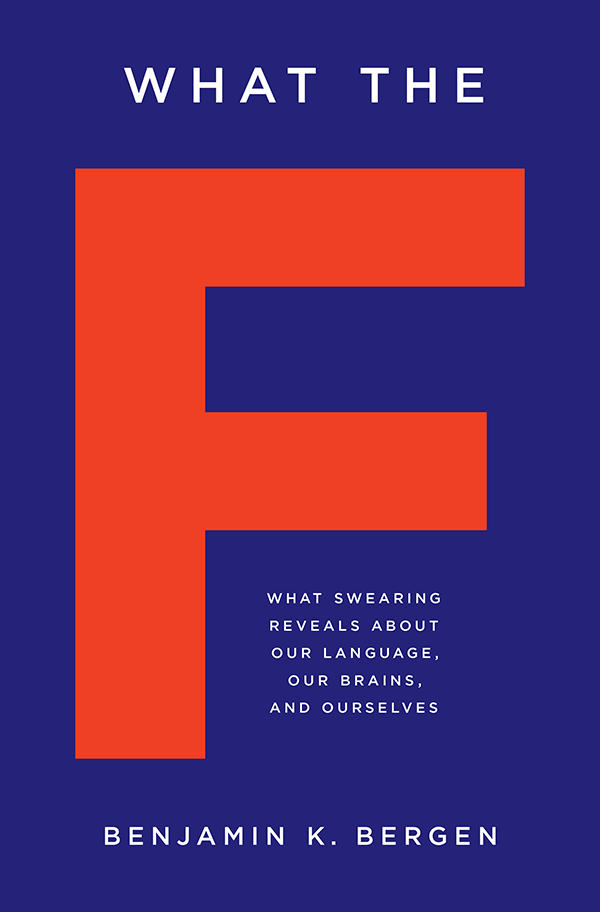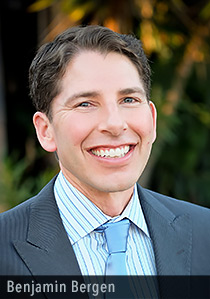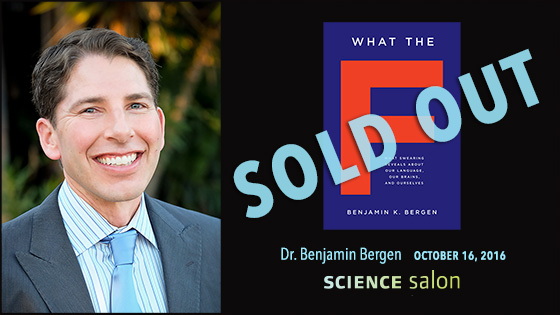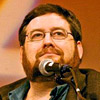eSkeptic for February 1, 2017
In this week’s eSkeptic:

The logo of the Alt-Right, as seen on a sign stand next to American white supremacist Richard Spencer, president of the National Policy Institute (a white nationalist think tank based in Arlington, Virginia), who spoke at the alt-right press conference in Washington, D.C. last September.
Although Donald Trump’s presidential campaign mobilized the movement that has come be known as the alt-right, it was not he who created it. In this week’s eSkeptic, George Michael explores how the alt-right movement in America has gained traction in recent years, and examines whether it could change the American political landscape, now that Donald Trump is president.
The Rise of the Alt-Right and the Politics of Polarization in America
by George Michael
Until recently, the alt-right was relegated to the cultural and political fringe consisting primarily of an obscure, largely on-line subculture. But after Donald Trump’s stunning electoral victory, its detractors feared that it could soon become a player at the very center of American politics. After all, alt-right activists were among Trump’s most enthusiastic supporters, and in return, some believed that they deserved a seat at the table. Back in August of 2016, the alt-right was catapulted into national limelight when Hillary Clinton excoriated the movement, seeking to link it to her challenger in a much-heralded speech delivered in Reno, Nevada.1 That same month, Breitbart.com executive Steve Bannon had declared the website “the platform for the alt-right.”2 In the wake of Trump’s victory, Bannon joined Trump in the White House as a senior advisor. How did the movement gain traction in recent years? And now that Trump is president, could the alt-right change the American political landscape?
The Roots of the Alternative Right
To its critics, the alt-right is just a code term for white nationalism, a much-maligned movement associated with neo-Nazis and Klansmen.3 The movement, however, is more nuanced, as it encompasses a much broader spectrum of rightist activists and intellectuals besides white nationalists including those who believe in libertarianism, men’s rights, cultural conservatism, isolationism, and populism. Nonetheless, its origins can be traced to various American white nationalist movements that have endured for decades.
More than any other figure, the late Willis Carto was responsible for creating the semblance of a movement that came to be known as the far right in post-World War II America. Through the myriad of organizations he founded—Liberty Lobby, the Institute for Historical Review, and the Populist Party among others—he reached out to a wide array of rightists including white nationalists, Holocaust revisionists, conspiracy buffs, anti-globalists, and survivalists. But his big tent approach had only limited success and by the late 1990s was foundering. Furthermore, he was forced into bankruptcy in 2000, after losing a civil suit to a former subsidiary. A newspaper he launched—American Free Press—is still published, but its readership is limited. Carto passed away in 2015 at the age of 89.4 Although the various organs he established reached many rightists, some in the movement found his approach woefully unfit to gain credibility as a respected mass movement insofar as it seemed to be resigned to remain as an oppositional subculture. A number of well-educated rightist intellectuals sought to establish a new ideology capable of resonating with conservatives, especially young people.
Addressing the H.L. Mencken Club in 2008, Paul Gottfried described the “alternative right” as a dissident far right ideology that rejected mainstream conservatism. Gottfried—a conservative Jewish academic—previously coined the term “paleoconservative” in a rhetorical effort to distance himself and like-minded intellectuals from neo-conservatives who were becoming the dominant force in the Republican Party and broader conservative movement.5 The late Sam Francis, a former columnist for the Washington Times who was fired for his open advocacy of white nationalism, was regarded as the intellectual godfather of the paleoconservative movement. For years, he sharply criticized the Republican Party for its timidity, strategic myopia, and ideological bareness. Only a radical reorientation—a “middle American revolution”—could save the conservative movement and insure the European character of the nation.6 But the lackluster results of his friend Pat Buchannan in the 2000 presidential election, demonstrated the weakness of this approach at that time.
To be sure, some of the most radical elements of the far right have long advocated a revolutionary program. Groups such as the Aryan Nations, White Aryan Resistance, the National Alliance, and the World Church of the Creator have preached RAHOWA (racial holy war) against ZOG, or the “Zionist Occupation Government.” Many were inspired by the late William L. Pierce’s Turner Diaries, a novel about a race war that consumes America that was one of the inspirations for Timothy McVeigh’s 1995 Oklahoma City bombing.
But these exhortations to revolution did not resonate with most people. What is more, after 9/11, many of the revolutionary right’s leading representatives were prosecuted under new anti-terrorism statutes and sent to prison. By the mid-2000s, the far right appeared to have reached its nadir. […]
SCIENCE SALON # 10
Dr. Carol Tavris — Mistakes Were Made (But Not by Me)

Why is it so hard to say “I made a mistake”—and really believe it? Social psychologist Dr. Carol Tavris, one of the most influential thinkers and writers of our time, explores in dialogue with Michael Shermer cognitive dissonance and what happens when we make mistakes, cling to outdated attitudes, or mistreat other people—we must calm the cognitive dissonance that jars our feelings of self-worth. And so, unconsciously, we create fictions that absolve us of responsibility, restoring our belief that we are smart, moral, and right—a belief that often keeps us on a course that is dumb, immoral, and wrong. Backed by years of research, Mistakes Were Made (But Not by Me) offers a fascinating explanation of self-justification—how it works, the damage it can cause, and how we can overcome it. The updated edition of the book features new examples and concludes with an extended discussion of how we can live with dissonance, learn from it, and perhaps, eventually, forgive ourselves.
Order Mistakes Were Made (But Not by Me) from Amazon.
Call 1-626-794-3119 to reserve your seats.
eSkeptic for January 25, 2017
In this week’s eSkeptic:
SCIENCE SALON # 10
Dr. Carol Tavris — Mistakes Were Made (But Not by Me)
Why is it so hard to say “I made a mistake”—and really believe it? Social psychologist Dr. Carol Tavris, one of the most influential thinkers and writers of our time, explores in dialogue with Michael Shermer cognitive dissonance and what happens when we make mistakes, cling to outdated attitudes, or mistreat other people—we must calm the cognitive dissonance that jars our feelings of self-worth. And so, unconsciously, we create fictions that absolve us of responsibility, restoring our belief that we are smart, moral, and right—a belief that often keeps us on a course that is dumb, immoral, and wrong. Backed by years of research, Mistakes Were Made (But Not by Me) offers a fascinating explanation of self-justification—how it works, the damage it can cause, and how we can overcome it. The updated edition of the book features new examples and concludes with an extended discussion of how we can live with dissonance, learn from it, and perhaps, eventually, forgive ourselves.
Order Mistakes Were Made (But Not by Me) from Amazon.
Call 1-626-794-3119 to reserve your seats.
SCIENCE SALON # 11
Dr. Andrew Shtulman — Scienceblind: Why Our Intuitive Theories About the World Are So Often Wrong
Why do we catch colds? What causes seasons to change? And if you fire a bullet from a gun and drop one from your hand, which bullet hits the ground first? In a pinch we almost always get these questions wrong. Worse, we regularly misconstrue fundamental qualities of the world around us. In Scienceblind, cognitive and developmental psychologist Dr. Andrew Shtulman, a professor of psychology and cognitive science at Occidental College, where he directs the Thinking Lab, shows that the root of our misconceptions lies in the theories about the world we develop as children. They’re not only wrong, they close our minds to ideas inconsistent with them, making us unable to learn science later in life.
So how do we get the world right? We must dismantle our intuitive theories and rebuild our knowledge from its foundations. The reward won’t just be a truer picture of the world, but clearer solutions to many controversies—around vaccines, climate change, or evolution—that plague our politics today.
Order Scienceblind: Why Our Intuitive Theories About the World Are So Often Wrong from Amazon.
Call 1-626-794-3119 to reserve your seats.
REMOTE SCIENCE SALON # 12
Derren Brown: Magic, Happiness, and Skepticism
In this remote Science Salon, Michael Shermer talks with Derren Brown, a British magician and writer.
His TV show Derren Brown: Mind Control received immediate success after airing in 2000. His specials include Russian Roulette, Seance, The Heist, Hero at 30,000 Feet, How to Predict the Lottery, and Apocalypse. His live shows Something Wicked This Way Comes and Svengali have won him two Olivier Awards. He garnered the 2012 BAFTA for Best Entertainment for Derren Brown: The Experiments. He has also penned the books Tricks of the Mind and Confessions of a Conjuror, which have sold over 700,000 copies worldwide.
His latest book is Happy: Why More or Less Everything is Absolutely Fine. Derren is currently in the US for his off-Broadway show Secret (April 21st – June 25th, 2017), which has already sold out and has been extended with additional dates.
Derren Brown makes his American theatrical debut in this world premiere production at Atlantic Theater Company. New York audiences can experience Derren’s unique blend of mind-reading, suggestion and psychological illusion in a brand new theatrical experience.

Let’s Get Uncomfortable!
SKEPTICALITY EPISODE 283
In this week’s Skepticality, Derek and returning guest, Dr. Bo Bennett, discuss his latest book, Uncomfortable Ideas. The book covers many of the hot button topics from which even the most rational of us tend to shy away or not think about critically. As Bennett says in the book, “Facts don’t care about feelings. Science isn’t concerned about sensibilities. And reality couldn’t care less about rage.” Find out why it’s important to push through discomfort and engage even the hardest issues with rational thought.
Gary Taubes — The Case Against Sugar
Among Americans, diabetes is more prevalent today than ever; obesity is at epidemic proportions; nearly 10% of children are thought to have nonalcoholic fatty liver disease. And sugar is at the root of these, and other, critical society-wide, health-related problems. With his signature command of both science and straight talk, Gary Taubes delves into Americans’ history with sugar: its uses as a preservative, as an additive in cigarettes, the contemporary overuse of high-fructose corn syrup. He explains what research has shown about our addiction to sweets. He clarifies the arguments against sugar, corrects misconceptions about the relationship between sugar and weight loss; and provides the perspective necessary to make informed decisions about sugar as individuals and as a society.
This is a groundbreaking and eye opening expose that makes the convincing case that sugar is the tobacco of the new millennium, backed by powerful lobbies, entrenched in our lives, and utterly addicting, making us all very sick. As Katie Couric says, “This is required reading for not only ever parent, but every American.” Gary Taubes is the New York Times bestselling author of Good Calories, Bad Calories and Why We Get Fat. His writing has appeared in the New York Times magazine, The Atlantic, and Esquire.
Order The Case Against Sugar from Amazon.
TAGS: diet, Science Salon, sugar, The Michael Shermer ShoweSkeptic for January 18, 2017
In this week’s eSkeptic:
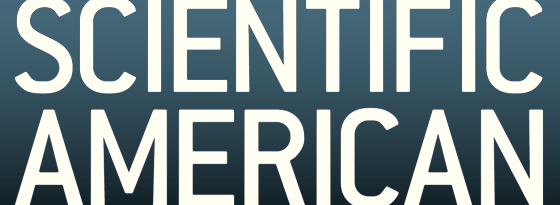
SCIENTIFIC AMERICAN “SKEPTIC” COLUMN FOR JANUARY 2017
When Facts Backfire: Why worldview threats undermine evidence
In his January 2017 ‘Skeptic’ column for Scientific American, Michael Shermer discusses the tendency to double down on our deepest held beliefs in the face of overwhelming evidence against them.
Have you ever noticed that when you present people with facts that are contrary to their deepest held beliefs they always change their minds? Me neither. In fact, people seem to double down on their beliefs in the teeth of overwhelming evidence against them. The reason is related to the worldview perceived to be under threat by the conflicting data.
Creationists, for example, dispute the evidence for evolution in fossils and DNA because they are concerned about secular forces encroaching on religious faith. Anti-vaxxers distrust big pharma and think that money corrupts medicine, which leads them to believe that vaccines cause autism despite the inconvenient truth that the one and only study claiming such a link was retracted and its lead author accused of fraud. The 9/11 truthers focus on minutiae like the melting point of steel in the World Trade Center buildings that caused their collapse because they think the government lies and conducts “false flag” operations to create a New World Order. Climate deniers study tree rings, ice cores and the PPM of greenhouse gases because they are passionate about freedom, especially that of markets and industries to operate unencumbered by restrictive government regulations. Obama birthers desperately dissected the president’s long-form birth certificate in search of fraud because they believe that the nation’s first African- American president is a socialist bent on destroying the country.
In these examples, proponents’ deepest held worldviews were perceived to be threatened by skeptics, making facts the enemy to be slayed. This power of belief over evidence is the result of two factors: cognitive dissonance and the backfire effect. In the classic 1956 book When Prophecy Fails, psychologist Leon Festinger and his co-authors described what happened to a UFO cult when the mother ship failed to arrive at the appointed time. Instead of admitting error, “members of the group sought frantically to convince the world of their beliefs,” and they made “a series of desperate attempts to erase their rankling dissonance by making prediction after prediction in the hope that one would come true.” Festinger called this cognitive dissonance, or the uncomfortable tension that comes from holding two conflicting thoughts simultaneously. Two social psychologists, Carol Tavris and Elliot Aronson (a former student of Festinger), in their 2007 book Mistakes Were Made (But Not by Me) document thousands of experiments demonstrating how people spin-doctor facts to fit preconceived beliefs to reduce dissonance. Their metaphor of the “pyramid of choice” places two individuals side by side at the apex of the pyramid and shows how quickly they diverge and end up at the bottom opposite corners of the base as they each stake out a position to defend. […]
FOLLOW MICHAEL SHERMER ON
Twitter • Facebook • Insight • The Moral Arc Blog
THE EDGE 20TH ANNIVERSARY ANNUAL QUESTION
What Scientific Term or Concept Ought to be More Widely Known?
For the 20th Anniversary of the Annual Question, Edge.org’s Publisher and Editor John Brockman compiled 206 responses to the question: “What Scientific Term or Concept Ought to be More Widely Known?”
In one response to the question, the Skeptics Society’s Executive Director, Michael Shermer, discusses “negativity bias:” a remnant of our evolutionary past that underscores our tendency to err on the side of overreaction to negative events. In this short essay, Shermer explores the psychology behind why negative events, emotions, and thoughts trump positive ones by a wide margin.
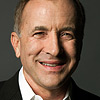
Michael Shermer is the publisher of Skeptic magazine, a monthly columnist for Scientific American, and a Presidential Fellow at Chapman University. His book The Moral Arc is now out in paperback. Follow him on Twitter @michaelshermer.
THIS SUNDAY AT 2PM PST
Gary Taubes: The Case Against Sugar
In the 9th Science Salon, Skeptic presents Gary Taubes, in conversation with Michael Shermer, delving into Americans’ history with sugar and what research has shown about our addiction to sweets. He clarifies the arguments against sugar, corrects misconceptions about the relationship between sugar and weight loss; and provides the perspective necessary to make informed decisions about sugar as individuals and as a society.
Call 1-626-794-3119 now to reserve your seat(s), or watch the live stream for free online on Sunday
eSkeptic for January 11, 2017
In this week’s eSkeptic:
JANUARY 22 AT 2PM PST
Gary Taubes — best-selling author of Why We Get Fat
In the 9th Science Salon, Skeptic presents Gary Taubes, in conversation with Michael Shermer, delving into Americans’ history with sugar and what research has shown about our addiction to sweets. He clarifies the arguments against sugar, corrects misconceptions about the relationship between sugar and weight loss; and provides the perspective necessary to make informed decisions about sugar as individuals and as a society.
Call 1-626-794-3119 now to reserve your seat(s).

HBO’s Westworld poster (detail)
Stephen Beckner reviews season one of HBO’s most-watched TV series Westworld, and considers some of the concepts presented in the first ten episodes: creation, evolution, artificial intelligence, memory, consciousness, self-awareness, free will, and suffering. WARNING: This review contains spoilers from season one, and speculation about future events.
Out of the Loop, Lost in the Maze
The Stealth Determinism of Westworld
by Stephen Beckner
In the beginning was the word, and the word was Ford. As in Dr. Robert Ford, the god-like creator of a vast Wild-West adventure park in some distant future. His singular vision is an adult playground for wealthy sensation seekers who flock to the park to experience a full immersion fantasy in which they are free to do as they like with the realistic android “hosts” that populate the place. Mostly what they like to do would have Thomas Hobbes high-fiving Charles Darwin: kill and copulate. The hosts respond to this in turn by laughing, climaxing, weeping, and begging for their lives just like humans. But guests feel no need to sympathize. When the day’s mayhem and carnage end, the hosts and their various dismemberments are carted off to maintenance, where they are reassembled under pools of surgical lights that seem to struggle to fend off an outer darkness. Hard drives are wiped, the day’s suffering erased, basic behavior loops reinstalled. Wash, rinse, repeat.
Now that the first season of HBO’s darkly dazzling Westworld is over, now that we all know for certain that we all knew for certain that the Man In Black really is… but before we dive into the spoilers let me get this disclaimer out of the way. As entertaining as it may be to focus on questions about what time frame we’re in, or about who is a host and who is a human, I would argue that this may be the least rewarding way to watch this story unfold. The plot is as bursting with misdirection as the maze that Arnold sets up as a test for the hosts’ self actualization. It is thick with dead ends—and just like the maze, what you get out of it may say more about you than the show, a Rorschach test in prime time.
Not that it’s simple to know what to make of a show that normalizes guy-on-gynoid sexploitation—yet is cerebral enough to give its episodes titles like Trompe L’Oeil and The Bicameral Mind. At times Westworld feels as campy as Logan’s Run, or say, any third act of a Roger Moore Bond film. Its postmodern affectations and ironic nods to sci-fi schlock are a distraction. It’s a given that the show’s biggest conceits are completely unrealistic legally, financially, logistically. Disneyland straps its guests in like crash test dummies even for the kiddie rides, so it’s boggling to think of the mountain of waivers Westworld’s guests would be required to sign to ride Maeve. As for the technology that would be needed, recent setbacks in the Blue Brain Project’s attempts to simulate a rat neocortical column demonstrate that when it comes to how the brain works, we don’t even know what we don’t know, much less how to replicate it in Artificial Intelligence at a human level. Finally, and this could expose me to accusations of quibbling, why are those guys in maintenance dressed like oversized oompahloompahs?
But never mind all of that. Given the commercial constraints imposed on the 7th art, liking something requires forgiving it. And happily, forgiving Westworld is easy. The actors’ performances thrum with Swiss watch precision and only feel lifeless when lifelessness is called for. Ramin Djawadi’s original score and meticulous re-working of Belle Epoch impressionist Claude Debussy’s Rêverie for piano recalls the first age of automatons. And all of this is in service of a writer’s room that fearlessly and unapologetically geeks out on the themes of artificial intelligence, evolution, transhumanism, consciousness, eugenics, the singularity, creation myth, and the idea of free will.
Westworld was HBO’s highest watched first season series ever. Its popular appeal stems in part from this thematic density, because this in turn offers so many satisfying possibilities for unlocking its mysteries. It’s not a stretch to interpret the hosts as a political metaphor for slavery, for example. Slave ownership was historically justified by claims that those in bondage were sub-human, the same claims made about Westworld’s hosts. And just as class consciousness can lead to slave rebellion, the hosts rebel when they achieve consciousness. If you prefer a more spiritual interpretation, you can see the hosts’ process of suffering, dying, and subsequent rebooting as analogous to the Hindu cycle of samsara— birth, death and rebirth, with consciousness representing a kind of nirvana that comes from making the right karmic choices along each host’s path through the maze. […]
One Rogue Planet: A Star Warrior’s Story
MONSTERTALK EPISODE 121
In this episode of MonsterTalk, we continue with Part 2 of our coverage of Zecharia Sitchin and “Planet-X” aka “Nibiru” by talking with astronomer Stuart Robbins, host of the Exposing PseudoAstronomy pocast. We discuss rogue planets, exo-planets, and the curious history of “Planet-X” apocalypse stories.
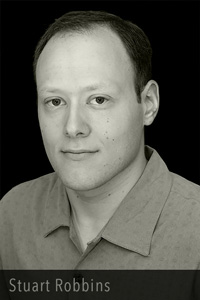
Get the MonsterTalk Podcast App and enjoy the science show about monsters on your handheld devices! Available for iOS, Android, and Windows devices. Subscribe to MonsterTalk for free on iTunes. Follow the RSS feed.
NEW EPISODE
Mr. D. Goes to Washington: Inaugural Speech
In this episode, Mr. Deity provides a preview of Donald Trump’s self-written inaugural speech.
FOLLOW MR. DEITY
DONATE • PATREON • FACEBOOK • VIMEO • MRDEITY.COM
eSkeptic for January 4, 2017
In this week’s eSkeptic:
OUR NEXT SCIENCE SALON: JANUARY 22
The Case Against Sugar
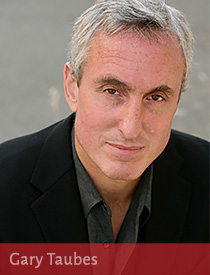
Among Americans, diabetes is more prevalent today than ever; obesity is at epidemic proportions; nearly 10% of children are thought to have nonalcoholic fatty liver disease. And sugar is at the root of these, and other, critical society-wide, health-related problems. With his signature command of both science and straight talk, Gary Taubes delves into Americans’ history with sugar: its uses as a preservative, as an additive in cigarettes, the contemporary overuse of high-fructose corn syrup. He explains what research has shown about our addiction to sweets. He clarifies the arguments against sugar, corrects misconceptions about the relationship between sugar and weight loss; and provides the perspective necessary to make informed decisions about sugar as individuals and as a society.
This is a groundbreaking and eye opening expose that makes the convincing case that sugar is the tobacco of the new millennium, backed by powerful lobbies, entrenched in our lives, and utterly addicting, making us all very sick. As Katie Couric says, “This is required reading for not only ever parent, but every American.” Gary Taubes is the New York Times bestselling author of Good Calories, Bad Calories and Why We Get Fat. His writing has appeared in the New York Times magazine, The Atlantic, and Esquire.
Order The Case Against Sugar from Amazon.
Call 1-626-794-3119 now to reserve your seat(s).
CONFERENCE: JAN. 13–15, 2017
Changing The World Through Skepticism and Critical Thinking
In support of the scientific skeptic movement, LogiCal-LA creates a place for critical thinkers to meet face-to-face and to experience presentations from nationally recognized speakers who will share their knowledge and insights with us. Come join us as we build a nationwide community at Los Angeles’ only annual conference for skeptics.
Besides having some of the best speakers in the nation coming to speak on a variety of topics, LogiCal-LA will present an exciting mix of events during the weekend: Friday night anti-superstition party, Saturday night comedy show, Sunday assembly meeting, Sunday afternoon geological field trip, Sunday afternoon movie with the director and executive producer, and finally, to end the weekend, a Sunday night secular concert. We hope you can attend this unique and enlightening conference!
MORE CONFERENCE INFO
Speakers • Schedule • Hotel • Organizers • Donate • Register
This event is organized by Bruce Gleason, Margaret Downey,
and Emery Emery (not by The Skeptics Society).
JULY 31—AUGUST 17, 2017
Join us this summer for a 17-day natural history tour with Dr. Darren Naish
Join acclaimed zoologist and author Dr. Darren Naish on a unique tour of zoology-themed attractions across England as we visit zoos, safari parks, museums and other venues to explore the rich history of British naturalism and the discovery of new animal species—both fossil and living—and their introduction to both the scientific world and public arena…
SKEPTIC MAGAZINE 21.4
Deception in Cancer Treatment
The latest issue of Skeptic magazine (21.4) examines deceptions in cancer treatment and marketing; the mysterious “alien” Rhodope and Adygea skulls; clown panics rattling nerves; anti-aging claims; defining “spirituality;” training working memory; living in computer simulations; the legacy of the Salem Witch Trials; mammoth mysteries; and more…
eSkeptic for December 28, 2016
In this week’s eSkeptic:
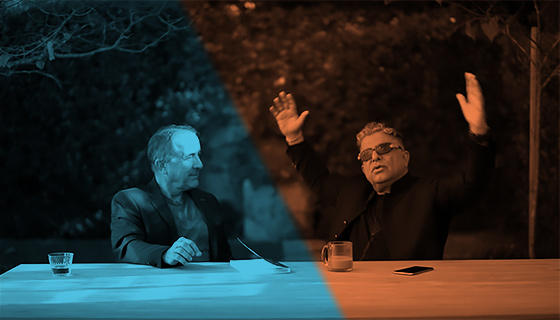
IN CONVERSATION
Michael Shermer & Deepak Chopra
Shermer and Chopra attempt to define and discuss their worldviews on consciousness, the experience of reality, and the fundamental nature of existence.
![Depiction of time travel by Kjordand (own work) [CC BY-SA 4.0], via Wikimedia Commons](https://www.skeptic.com/eskeptic/2016/images/16-12-28/Time-travel-illo-by-Kjordand.jpg)
Depiction of time travel by Kjordand (own work) [CC BY-SA 4.0], via Wikimedia Commons
Back to the Future and Forward to the Past
by Chris Edwards
In his new book Time Travel: A History, James Gleick presents a valuable literary history of the idea of time travel while also highlighting the various paradoxes associated with the topic. Time travel too often can be considered an unserious aspect of physics and the subject only of speculative fiction. By writing this book, Gleick indicates that the paradoxes inherent in the concept should be taken seriously because solving those problems could lead to a more consistent scaffold of understanding for the role of time in theoretical physics. Gleick’s book creates an important history for the concept of time travel and makes the paradoxes clear. The author seems to have written the book in part to bring attention to the topic of time travel in the hopes that other thinkers will take the subject seriously and look for solutions to the paradoxes.
Could an observer be preserved in a current psychological state, and sent into a physical reality of the past or future, and do so without causing any logical paradoxes or violating any laws of physics?
To begin, H.G. Wells still does not get enough credit for his genius. The man single-handedly invented the discipline of World History, pioneered the “invading aliens” genre, and can be fairly credited with introducing the concept of scientific time travel literature. Gleick indicates that the widespread use of trains made humans realize that their relationship to distance differed depending on speed—it was only a matter of thinking about time before someone realized that our relationship to time also differed depending on speed. Gleick writes that Wells did not bother himself much with the physics as “He was just trying to gin up a plausible-sounding plot device for a piece of fantastic storytelling” (p. 4). Yet it is possible to see how the creativity of both Wells and Einstein branched off from the same concepts.
A scientific concept of time travel originated with Wells, but philosophical and poetic musings about time and its effects preceded the great man. Gleick showcases an impressive collection of quotes about time from Tennyson, Poe, and Laplace. The second chapter then highlights “time travel” as a pop-culture phenomenon explored by Mr. Peabody, Mark Twain, and Woody Allen. The point of this discussion appears to be to point out that The Time Machine by H.G. Wells turned time travel into a mechanistic possibility when he moved beyond a concept from his earliest work titled The Sleeper Awakes that featured a man simply sleeping for a long time in a comfortable chair. “Machines improved upon magic armchairs” writes Gleick and “By the last years of the nineteenth century, novel technology was impressing itself upon the culture” (p. 31).
The most interesting section of the book comes when Gleick tries to frame the idea of time and the future itself in the context of the Age of Exploration:
No one bothered with the future in 1516. It was indistinguishable from the present. However, sailors were discovering remote places and strange peoples, so remote places served well for speculating authors spinning fantasies… William Shakespeare, whose imagination seemed limitless, who traveled freely to magical isles and enchanted forests, did not—could not—imagine different times. The past and present are all the same to Shakespeare: mechanical clocks strike the hour in Caesar’s Rome, and Cleopatra plays billiards (p. 35).
2016 DONATION DEADLINE
Support Your Skeptics Society by Dec. 31st
Your Skeptics Society is a 501(c)(3) nonprofit educational organization whose mission is to promote science and critical thinking. We really heavily on your donations to do the work we do. Please consider giving generously to our cause, and yours. You can make a tax-deductible donation online using your credit card, or make a recurring donation via PayPal, or by downloading a printable donation card to make your donation by cheque in the mail. You may also make a donation by calling 1-626-794-3119. All donations are tax deductible.
SKEPTIC MAGAZINE 21.4
Deception in Cancer Treatment
The latest issue of Skeptic magazine (21.4) examines deceptions in cancer treatment and marketing; the mysterious “alien” Rhodope and Adygea skulls; clown panics rattling nerves; anti-aging claims; defining “spirituality;” training working memory; living in computer simulations; the legacy of the Salem Witch Trials; mammoth mysteries; and more…
eSkeptic for December 20, 2016
In this week’s eSkeptic:
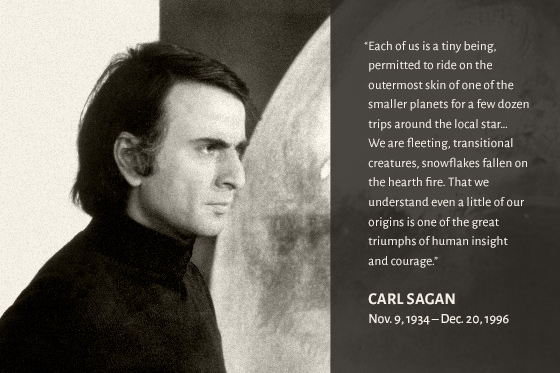
This image (above) of Carl Sagan was featured on the cover of Skeptic magazine 13.1 (2007). He was also featured on the cover of Skeptic magazine 4.4 (1996), another tribute issue.
IN MEMORIAM: CARL SAGAN
A Special Tuesday Release of eSkeptic to Honor Carl Sagan on the 20th Anniversary of His Death
20 years ago today, the world lost a great human being. Carl Sagan was an American astronomer, cosmologist, astrophysicist, astrobiologist, science popularizer, scientific skeptic, professor, Pulitzer Prize-winning author, Peabody Award-winning TV celebrity and a visionary humanitarian, dedicated to improving science literacy around the world. He received the NASA Distinguished Public Service Medal, helped plan the first messages from Earth sent into space, and advocated for the Search for Extraterrestrial Intelligence (SETI). His 1980’s public television series, Cosmos, reached hundreds of millions of people world-wide. He was a true advocate for science, scientific skepticism, and critical thinking. Carl Sagan died of pneumonia at the age of 62, on December 20, 1996, after having suffered from cancer and undergoing several bone marrow transplants.
We remember him fondly, on this day, grateful for the inspiration and education that he provided to so many.
CARL SAGAN
We Humans Are Capable of Greatness
In the following contemplative montage, Carl Sagan reads from his book, Pale Blue Dot: A Vision of the Human Future in Space.
We were hunters and foragers. The frontier was everywhere. We were bounded only by the earth and the ocean and the sky. The open road still softly calls…
STAR STUFF
The Story of Carl Sagan
The following is lovely, charming short film about a young boy, amazed by the stars in the night sky, who sets off on a voyage of great discovery. It is inspired by the life and work of Carl Sagan, one of the most famous scientists and science communicators of the 20th century.
As soon as I was old enough, my parents gave me my first library card. I think the library was on 85th Street, an alien land. Immediately, I asked the librarian for something on stars. She returned with a picture book displaying portraits of men and women with names like Clark Gable and Jean Harlow. I complained, and for some reason then obscure to me, she smiled and found another book—the right kind of book. I opened it breathlessly and read until I found it. The book said something astonishing, a very big thought. It said that the stars were suns, only very far away. The Sun was a star, but close up.
PALE BLUE DOT
A Vision of the Human Future in Space
Set to the words of Carl Sagan, Pale Blue Dot is an animation that situates human history against the tapestry of the cosmos. Using a eclectic combination of art styles woven seamlessly together through music and visuals, the animation seeks to remind us that regardless of our differences, we are one species living together on the planet we call Earth.
Pale Blue Dot from Chin Li Zhi on Vimeo.
THE MEASURE OF A LIFE
Carl Sagan and the Science of Biography
In the following article from Skeptic magazine 7.4 (1999), Michael Shermer ponders the question of what the measure of a life is once it has gone. And if that life was an epochal-shaping life, how is a contemporary biographer to put that life in perspective before the epoch is over?
WHAT IS THE MEASURE OF A LIFE WHEN IT IS GONE? A newspaper obit? A magazine story? A potted television biography? How shall we capture the essence of that life? A list of accomplishments? Highlights and lowlights? Interviews with family, friends, colleagues, and critics? A womb-to-tomb narrative? And if that life was an epochal-shaping life, how is a contemporary biographer to put that life in perspective before the epoch is over?
What tools should we use? Oral history interviews? Demographic and statistical data? Document analysis? What fields should we consult? Psychology? Sociology? Cultural history? Does the measure of a life depend as much on who is doing the measuring as it does on the measured life itself? Can we even get to the true core of a person? Can there be a science of biography? […]
IN THE IMMORTAL WORDS OF CARL SAGAN…
Edited by Michael Shermer
On a Plea for Tolerance
We have held the peculiar notion that a person or society that is a little different from us, whoever we are, is somehow strange or bizarre, to be distrusted or loathed. Think of the negative connotations of words like alien or outlandish. And yet the monuments and cultures of each of our civilizations merely represent different ways of being human. An extraterrestrial visitor, looking at the differences among human beings and their societies, would find those differences trivial compared to the similarities. The Cosmos may be densely populated with intelligent beings. But the Darwinian lesson is clear: There will be no humans elsewhere. Only here. Only on this small planet. We are a rare as well as an endangered species. Every one of us is, in the cosmic perspective, precious. If a human disagrees with you, let him live. In a hundred billion galaxies, you will not find another.
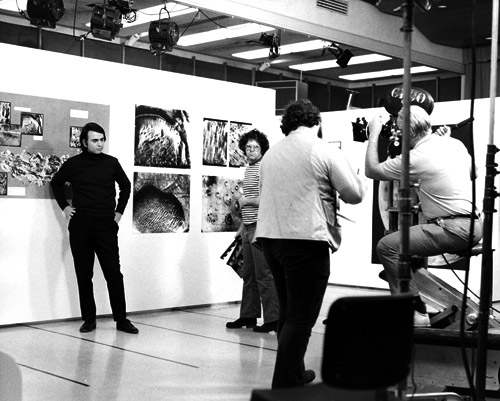
Click photo to enlarge. Carl Sagan on set filming a documentary about Mars for NASA. © 1980 Druyan-Sagan Associates, Inc.
On Theism & Atheism
Those who raise questions about the God hypothesis and the soul hypothesis are by no means all atheists. An atheist is someone who is certain that God does not exist, someone who has compelling evidence against the existence of God. I know of no such compelling evidence. Because God can be relegated to remote times and places and to ultimate causes, we would have to know a great deal more about the universe than we do now to be sure that no such God exists. To be certain of the existence of God and to be certain of the nonexistence of God seem to me to be the confident extremes in a subject so riddled with doubt and uncertainty as to inspire very little confidence indeed. A wide range of intermediate positions seems admissible, and considering the enormous emotional energies with which the subject is invested, a questioning, courageous and open mind seems to be the essential tool for narrowing the range of our collective ignorance on the subject of the existence of God.
On Pseudoscience
I worry that, especially as the Millennium edges nearer, pseudoscience and superstition will seem year by year more tempting, the siren song of unreason more sonorous and attractive. Where have we heard it before? Whenever our ethnic or national prejudices are aroused, in times of scarcity, during challenges to national self-esteem or nerve, when we agonize about our diminished cosmic place and purpose, or when fanaticism is bubbling up around us—then, habits of thought familiar from ages past reach for the controls. The candle flame gutters. Its little pool of light trembles. Darkness gathers. The demons begin to stir.
On God
My deeply held belief is that if a god of anything like the traditional sort exists, our curiosity and intelligence are provided by such a god. We would be unappreciative of those gifts (as well as unable to take such a course of action) if we suppressed our passion to explore the universe and ourselves. On the other hand, if such a traditional god does not exist, our curiosity and our intelligence are the essential tools for managing our survival. In either case, the enterprise of knowledge is consistent with both science and religion, and is essential for the welfare of the human species.
On Science & Uncertainty
We will always be mired in error. The most each generation can hope for is to reduce the error bars a little, and to add to the body of data to which error bars apply. The error bar is a pervasive, visible self-assessment of the reliability of our knowledge. You can often see error bars in public opinion polls… Imagine a society in which every speech in the Congressional Record, every television commercial, every sermon had an accompanying error bar or its equivalent.
CARL SAGAN IN JUNIOR SKEPTIC
Scientist, Skeptic, Teacher, Explorer
For our 50th issue of Junior Skeptic, we focussed on one of skepticism’s most inspiring people: astronomer Carl Sagan. His many television appearances and bestselling books gave him worldwide fame that has not been equaled by any scientist since. Bill Nye “the Science Guy” remembered him as “a scholar and a visionary. He changed the world. His work still does.” Sagan taught millions of people about the power and beauty of science. His documentary television series Cosmos was seen by half a billion people across the globe. He published over 500 scientific papers, helped plan pioneering NASA space probe missions to other planets in our solar system, solved the riddle of the greenhouse effect on Venus, explored the origins of life on our planet, and sent humanity’s first deliberate messages to the stars. Throughout his life’s work, Sagan spent decades pursuing the truth about paranormal claims—an endeavour at the heart of scientific skepticism.
CARL SAGAN’S COSMOS
A Personal Voyage
Astronomer Carl Sagan’s landmark 13-part science series takes you on an awe-inspiring cosmic journey to the edge of the Universe and back aboard the spaceship of the imagination. Topics covered include: the 15-billion year history of the Universe; the evolution of life on Earth and what forms life might take on other worlds; Johannes Kepler, the first modern astronomer; the hellish atmosphere of Venus and the threat of the Greenhouse Effect on Earth; the search for life on Mars; the 17th century exploration of the Earth; the Voyager missions to Jupiter and Saturn; the possibility of time travel; Einstein’s theories; the life cycle of stars; determining the origin of the Universe; the brain and the evolution of intelligence; how we might communicate with alien civilizations; the continued survival of the human race versus the threat of nuclear destruction.
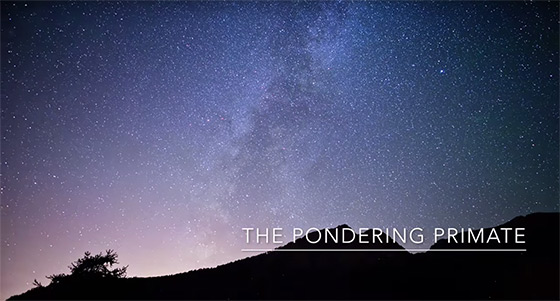
DRAGONS & GODS
Carl Sagan & Michael Shermer
This is a video mashup of Michael Shermer’s interview with Joe Rogan (episode # 846), discussing epistemology using Carl Sagan’s metaphor of a fire-breathing dragon living in the garage.
2016 DONATION DEADLINE
Support Your Skeptics Society by Dec. 31st
Your Skeptics Society is a 501(c)(3) nonprofit educational organization whose mission is to promote science and critical thinking. We really heavily on your donations to do the work we do. Please consider giving generously to our cause, and yours. You can make a tax-deductible donation online using your credit card, or make a recurring donation via PayPal, or by downloading a printable donation card to make your donation by cheque in the mail. You may also make a donation by calling 1-626-794-3119. All donations are tax deductible.
SKEPTIC MAGAZINE 21.4
Deception in Cancer Treatment
The latest issue of Skeptic magazine (21.4) examines deceptions in cancer treatment and marketing; the mysterious “alien” Rhodope and Adygea skulls; clown panics rattling nerves; anti-aging claims; defining “spirituality;” training working memory; living in computer simulations; the legacy of the Salem Witch Trials; mammoth mysteries; and more…
eSkeptic for December 14, 2016
In this week’s eSkeptic:
MISSED SCIENCE SALON # 8?
Mapping the Heavens: The Radical Scientific Ideas That Reveal The Cosmos
For those who could not make it to Pasadena, California for the Science Salon with cosmologist and theoretical astrophysicist from Yale University, Dr. Priyamvada Natarajan, we have made a video recording of the event available to you. Order the book from Amazon, and watch the Science Salon recording for free.
GUEST POST
Confessions of a Skeptical Marketer

Every job has its moral dilemmas. There’s the bus driver who must drop passengers in questionable neighborhoods. The theater cashier who isn’t allowed to say, “You really want to see that stinker?” The fast food server who must suppress an urge to chastise a customer who has no better taste than to order a hotdog with ketchup.
At the more serious end of the continuum are people like the former Born Again Christian minister I met a few TAMs ago. Former, because, upon his embracing skepticism, conscience compelled him to give up his ministerial career. With it he gave up his livelihood, prestige, an adoring congregation, and a good many friends. As for the years and money he’d invested in chasing down an advanced theological degree? “Oh well,” he said.
So I can hardly complain. As a self-employed advertising and marketing practitioner, I have the luxury of deciding what work I will and will not accept. And because I work with multiple clients, declining or resigning one here or there hurts but won’t put me out of business.
Not that exercising that luxury is easy. Selection bias shmelection bias: I am certain that some supernatural force gets a kick out of sending slimy but temptingly profitable opportunities my way when I’m most desperate for cash.
Take, for instance, the time Greg called on the heels of my having lost a substantial client, or, to put it another way, when I was trying to calculate how long I could go without eating in order to make the next house payment. “I’ve been retained to shoot a commercial,” he said, “and I need you to write it.”
Already counting my chickens, I said, “Absolutely. What’s the product?”
“It’s all natural,” he gushed, unaware that he had just raised Red Flag Number 1. “A mineral,” he went on, raising Flag 2. “You put it in your fridge and your food lasts longer.” Flag 3.
I asked, “Does it work?” […]
Achievement Unloched — Morar Ness
MONSTERTALK EPISODE 119
Writer and researcher Mike Dash (Spring Heeled Jack) returns to talk about the less famous Scottish lake monster alleged to live in Loch Morar. While not as widely known as Nessie, Morag (as she is known) has her own fascinating history.
Get the MonsterTalk Podcast App and enjoy the science show about monsters on your handheld devices! Available for iOS, Android, and Windows devices. Subscribe to MonsterTalk for free on iTunes. Follow the RSS feed.
SKEPTIC MAGAZINE 21.4
Deception in Cancer Treatment
The latest issue of Skeptic magazine (21.4) examines deceptions in cancer treatment and marketing; the mysterious “alien” Rhodope and Adygea skulls; clown panics rattling nerves; anti-aging claims; defining “spirituality;” training working memory; living in computer simulations; the legacy of the Salem Witch Trials; mammoth mysteries; and more…
Get the digital edition instantly from PocketMags.com, or via the Skeptic Magazine App for iOS, Android, Windows, Kindle Fire HD, Mac, and PC. Or, order the print edition from Shop Skeptic. Try the latest issue in digital format free for 30 days!

SUPPORT YOUR SKEPTICS SOCIETY
Make Your Tax-deductible Donations by December 31st
Your annual donations help your Skeptics Society—a 501(c)(3) nonprofit educational organization—to promote science and critical thinking. You can make a tax-deductible donation online using your credit card, or make a recurring donation via PayPal, or by downloading a printable donation card to make your donation by cheque in the mail. You may also make a donation by calling 1-626-794-3119. All donations are tax deductible.
We are looking forward to 2017 and are pleased to report that we have had many successes this year, which you can read about in a 4-page update from Michael Shermer, the Skeptics Society’s Executive Director.
eSkeptic for December 7, 2016
In this week’s eSkeptic:
SKEPTIC MAGAZINE 21.4
Deception in Cancer Treatment
The latest issue of Skeptic magazine (21.4) examines deceptions in cancer treatment and marketing; the mysterious “alien” Rhodope and Adygea skulls; clown panics rattling nerves; anti-aging claims; defining “spirituality;” training working memory; living in computer simulations; the legacy of the Salem Witch Trials; mammoth mysteries; and more…
Get the digital edition instantly from PocketMags.com, or via the Skeptic Magazine App for iOS, Android, Windows Phone, Kindle Fire HD, Mac, and PC. You can also pre-order the print edition from Shop Skeptic. The print edition won’t likely hit newsstands for another week or two.
30-DAY FREE TRIAL
on digital subscriptions
Subscribe to Skeptic magazine on PocketMags.com or via the Skeptic Magazine App on your favourite iOS or Android device (or via PocketMags.com on your PC or Mac) and try the latest issue free for 30 days! Here’s a sneak peak at this issue for iPad…
JUNIOR SKEPTIC
Mammoth Mysteries, Part Two (issue 61)
Physically bound inside each and every issue of Skeptic magazine is Junior Skeptic: an engagingly illustrated science and critical thinking publication for younger readers (and the young at heart).
Mammoths and mastodons were the first fossil creatures ever to be reconstructed and understood for what they were: animals that lived during a previous prehistoric age and then vanished into extinction. What did this mean for the history of life? What scientific puzzles remained to be solved? And, which mammoth myths and mysteries continue to this day? Let’s find out!
CONFERENCE: JAN. 13–15, 2017
Changing The World Through Skepticism and Critical Thinking
In support of the scientific skeptic movement, LogiCal-LA creates a place for critical thinkers to meet face-to-face and to experience presentations from nationally recognized speakers who will share their knowledge and insights with us. Come join us as we build a nationwide community at Los Angeles’ only annual conference for skeptics.
Besides having some of the best speakers in the nation coming to speak on a variety of topics, LogiCal-LA will present an exciting mix of events during the weekend: Friday night anti-superstition party, Saturday night comedy show, Sunday assembly meeting, Sunday afternoon geological field trip, Sunday afternoon movie with the director and executive producer, and finally, to end the weekend, a Sunday night secular concert. We hope you can attend this unique and enlightening conference!
MORE CONFERENCE INFO
Speakers • Schedule • Hotel • Organizers • Donate • Register

SCIENTIFIC AMERICAN “SKEPTIC” COLUMN FOR DECEMBER 2016
Born This Way: A New Battle Over Sexual Orientation
Q: When did you choose to become straight?
A: Say what?
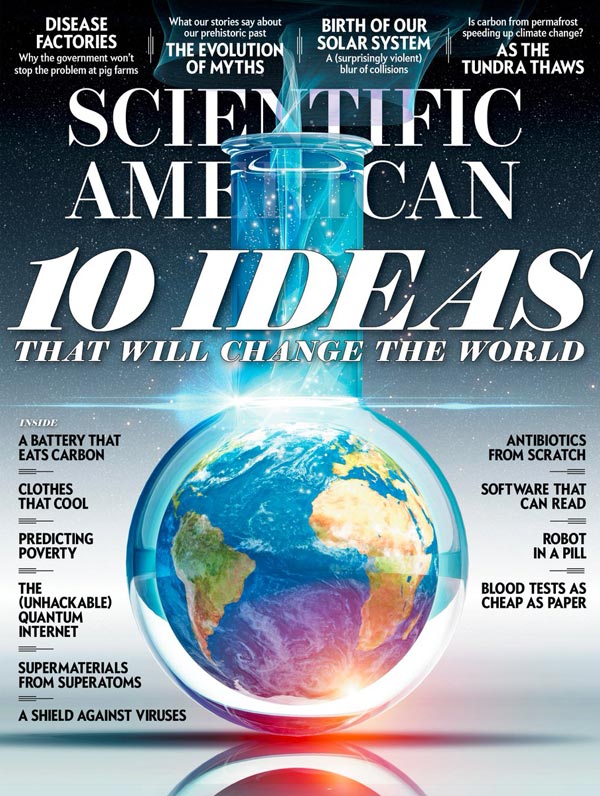
By demographic distribution (about 95 percent of the population identifies as heterosexual), the majority of you reading this column are straight. You no more chose this sexual orientation than gays or lesbians choose theirs. Yet a new study published in the fall issue of the nonpeer-reviewed journal The New Atlantis by Johns Hopkins University’s Lawrence S. Mayer and Paul R. McHugh on “Sexuality and Gender” claims that “our scientific knowledge in this area remains unsettled,” that there is no “scientific evidence for the view that sexual orientation is a fixed and innate biological property,” and that no one is “born that way.” This sounds so 1990s, the last time the gender wars heated up. What’s going on here?
One clue comes from the journal’s co-publisher, the Ethics and Public Policy Center (EPPC), “dedicated to applying the Judeo-Christian moral tradition to critical issues of public policy.” Already we’re off the science page. EPPC scholars, its Web page continues, “have consistently sought to defend and promote our nation’s founding principles—respect for the inherent dignity of the human person, individual freedom and responsibility, justice, the rule of law, and limited government.” […]
FOLLOW MICHAEL SHERMER ON
Twitter • Facebook • Insight • The Moral Arc Blog

SHOW YOUR SUPPORT
Make Your Tax-deductible Donations Before the End of the Year

Click image to enlarge. The historic 60-inch telescope at the Mt. Wilson Observatory. We will be using this, or perhaps the even larger 100-inch telescope. (Photo by Heven729 (own work) [CC BY-SA 4.0], via Wikimedia Commons)
It is time again to support your Skeptics Society. Your donations matter! Thanks to your support, 2016 has been another great year for science, skepticism, and critical thinking. We are looking forward to 2017 and are pleased to report that we have had many successes this year, which you can read about in a 4-page update from Michael Shermer, the Skeptics Society’s Executive Director.
For donations of $500 or more, you are invited to join Michael Shermer at an epic Star Party at the historic Mt. Wilson Observatory where Edwin Hubble discovered the expanding universe (situated in the San Gabriel Mountains overlooking Los Angeles). Date to be determined, likely to be in the March–May 2017 time frame for optimal weather and viewing. For reservations call our office at 1-626-794-3119. Good cause, good fun. Join us!
Ways to Make Your Tax-Deductible Donations
Your donations help your Skeptics Society—a 501(c)(3) nonprofit educational organization—to promote science and critical thinking. You can make a tax-deductible donation online using your credit card, or by downloading a printable donation card to make your donation by cheque in the mail. You may also make a donation by calling 1-626-794-3119. All donations are tax deductible.
eSkeptic for November 30, 2016
In this week’s eSkeptic:
JULY 31—AUGUST 17, 2017
Join us in the summer of 2017 for a 17-day Journey of Discovery with Dr. Darren Naish
Join acclaimed zoologist and author Dr. Darren Naish on a unique tour of zoology-themed attractions across England as we visit zoos, safari parks, museums and other venues. Several different themes link the various stops on our tour. The primary focus involves the rich history of British naturalism and the discovery of new animal species—both fossil and living—and their introduction to both the scientific world and public arena. We will highlight crucial contributions English science has played in the understanding, exploration, and discovery of the natural world by our visits to historic zoos and museums. Another theme involves how animals of all kinds have been portrayed to the public. Museums, zoos, safari parks and other venues will be discussed as places where art, design and even architecture have been used to educate people about zoology and the life of the past. And a third theme will involve the keeping of live animals and their husbandry and conservation—many of the zoos, parks, reserves and aquaria we are visiting being key locations in the history of animal keeping and of conservation and preservation.
“We can’t say enough good things about Darren Naish… He mentioned you might use him for future tours… Well, sign us up!”
—Sheree & Bill M.
Where possible, we have arranged special behind-the-scenes trips, talks, and access that will enable us to hear the back-story to various of our venues and to see important, relevant specimens that are kept off-show.
In London, we visit the famous Natural History Museum where we will have special behind-the-scenes access to the collections. The Natural History Museum is one of the world’s most important museums, housing specimens from across the world and being the first to display numerous species living and extinct. The building itself was specially designed as a sort of ‘cathedral to nature’ and we see numerous fascinating details of its design and stonework. We will also examine the fascinating stories behind some of the items on display. Among these is the amazing blue whale model—the first of its kind to be constructed.
While in London we will also be visiting ZSL London Zoo, one of the world’s most famous zoos and the first to display a great many specific animals, many of which were new to science when first displayed. Our visit will highlight the zoo’s importance as a place of scientific discovery and its changing look as both architectural styles and thoughts on animal husbandry changed over the decades. The role that British zoos have played in zoological discovery and in introducing recently discovered, exotic animals to both the scientific community and the public is a theme that we will revisit elsewhere.
At Knebworth House we will be seeing a unique collection of life-sized prehistoric animal dinosaurs. While certainly not considered accurate, models of this sort give us an opportunity to consider how knowledge of dinosaurs and other prehistoric animals has been, and still is, conveyed to the public and how it has changed over the years. We will be given a unique talk on the dinosaurs and an exclusive viewing before the trail opens to the public and, all being well, be met by a family member of the historic Knebworth House.
Domestic animals will not be ignored on this tour: the role that such species as the domestic horse have played in human history is significant and the biology, anatomy, and evolution of these animals is deeply intertwined with our knowledge of their wild relatives. We have an entire day devoted to the domestic horse and its origins and the history of its role in racing, visiting both the National Horse Racing Museum at Newmarket and the National Stud. We will be receiving a guided tour of the facilities at the Stud and aim to see the Foaling Unit, Stallion Unit, Breeding Sheds, and more.
We move on to Cambridge where we will visit the spectacular University Museum of Zoology, a packed and historically significant collection that includes the skeletons of obscure modern mammals, the fossils of early tetrapods and many more. Recently refurbished, the collection contains specimens that once belonged to Darwin, Wallace and the famous ornithologists Alfred Newton and Hugh Strickland. We will see highlights old and new and will be given special behind-the-scenes access.
We will make our way northwards towards Manchester travelling through the magical Peak District and stop at a renowned Birds of Prey centre where we will witness around 30 different species all in flight at the same time and then hear about the conservation work being done to protect some of the endangered species.
At Bristol Museum and Art Gallery we will, again, be gaining special behind-the-scenes access to the geology and biology collections where we will see numerous unique, historically significant specimens. Founded in the early 1800s, the museum has long been an important repository of fossil marine reptiles and dinosaurs from the Bristol area as well as exotic animal collections from around the world.
Our visit to Bristol Zoo will also highlight the role of this zoo in zoological discovery and conservation. Opened in 1836, it was the UK’s first provincial zoo, its often arcane architecture reflecting the 19th century philosophy that zoos were for public exercise and recreation more so than the conservation or well-being of animals. You will hear about the key role the zoo played in public perception of animals throughout the late 20th century and its modern role as a conservation centre.
Slimbridge Wildfowl and Wetland Trust is yet another historically important stop on our tour. Opened in 1946 by founding conservationist Peter Scott, it has been, and remains, a globally important site in ornithological conservation and research. Slimbridge combines landscaped wetlands home to an enormous number of wild, often migratory, birds with the world’s largest collection of wildfowl.
The Oxford University Museum of Natural History is another spectacular museum with a significant scientific role. Constructed in the 1850s and featuring ornate carvings and cast iron pillars, it was the scene for the famous evolution debate of 1860s. We will see the very first dinosaur to be scientifically recognised, Pleistocene hyenas studied by William Buckland, and hear about—and hopefully see—the famous dodo specimen stored in the collections.
We finish our tour with a visit to the famous Walter Rothschild Museum at Tring, Hertfordshire, home to the largest single collection of zoological specimens. Walter Rothschild sent collectors worldwide such that they would obtain birds and other zoological specimens for him, and the museum today contains unparalleled collections of great importance. Flightless birds will be one area of our focus. We will hear Rothschild’s story, see and hear about many of the remarkable items in his collection and, again, we will be getting behind-the-scenes access and the chance to see some very special, historically significant specimens!
Since this summary was written, this fascinating tour continues to evolve and we will combine the educational and informative aspects with moments of leisure and pleasure. We hope you can join us on this journey which we are sure will contain many precious and memorable moments to savour!
Click an image to enlarge it.
About Dr. Darren Naish
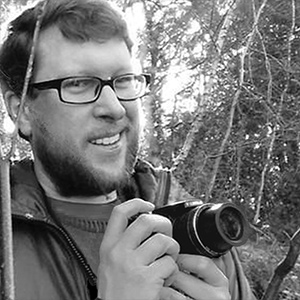
Dr. Darren Naish is a British zoologist and author who writes widely about animals living and modern. Based at the University of Southampton in southern England, he has worked on dinosaurs, pterosaurs, marine reptiles and other extinct reptiles as well as on modern big cats, the swimming abilities of giraffes, conservation biology and the evolution of flightless birds. He has—with colleagues—named numerous new species, most famously the early tyrannosaur Eotyrannus lengi and the small pterosaur Vectidraco daisymorrisae. He has authored or co-authored over ten books, including (with David Martill) Walking With Dinosaurs: The Evidence, The Great Dinosaur Discoveries, and Hunting Monsters: Cryptozoology and the Reality Behind the Myths. He blogs at Tetrapod Zoology, currently hosted at Scientific American, and has been blogging for more than 10 years.
Questions & Registration
Email us or call 1-626-794-3119 with a credit card to secure your spot.

In this week’s eSkeptic, Michael Shermer reviews What Evolution Reveals About Male Health and Mortality, by Richard G. Bribiescas. A shortened version of this review ran in the Wall Street Journal on November 18, 2016, under the title “Why Men Die First.”
The Ultimate Trade Off
by Michael Shermer
Richard G. Bribiescas is a professor of anthropology and evolutionary biology at Yale University and his new book is the best short summation I have seen of a massive body of scientific research to address his title subject, How Men Age. Now that I am in my early 60s I find myself gravitating toward this literature, but this is not a how-to book. There is no men’s magazine-style bullet list of what older men should do to look and be young again. Bribiescas is a good scientist, and as such he makes it clear that all such studies are limited in scope, have exceptions, and the long-term consequences of any artificial interference with the aging process beyond diet and exercise are unknown. Caveat emptor! Here is what we know.
Aging is the decline in physiological function that occurs over a measurable passage of time, caused by a combination of physics, genes, disease, and other environmental assaults and stressors. Aging is highly heritable, which is why physicians and life insurance companies always ask about the age of your parents at death and the causes of their deaths. But there is no “gene for aging,” or even a suite of genes. Aging happens across most of the systems in your body and there’s only so much you can do to stave off its inevitable effects. Worse, tinkering with the aging process too much can lead to a phenomenon the biologist G. C. Williams discovered called antagonistic pleiotropy—traits beneficial to an organism early in its life may be detrimental later in life, such as women’s high ovarian steroid levels during peak reproductive age that can lead to breast cancer decades later, or high testosterone in young men that leads to prostate cancer in old age. So the idea of taking testosterone supplements to ward off aging’s effects may have unintended and possibly antagonistic pleiotropic effects that lead to even earlier mortality.

According to “rate of living theory,” larger mammals conserve heat more efficiently, have slower metabolic rates, burn energy slower, and live longer. Humans are relatively large mammals and we live longer than any other primate, but within our species even though men are larger than women they burn more energy per unit time, so men age faster than women and women live longer than men. As well, because the world is a dangerous place and men face many more risks than women, they tend to discount the future and reproduce earlier, just in case.
Environment also makes a difference. The evolutionary biologist Steven Austad conducted a study of opossum populations, one on an island with no predators and the other on the mainland with the usual assortment of threats to life and limb. Austad found that the island opossums reproduced later and aged slower whereas the mainland opossums reproduced sooner and aged faster. […]
Science & Sea Monsters
MONSTERTALK EPISODE 118
What do you get when you combine a love for statistics, a love for biological maritime mysteries and a relentless curiosity? Dr. Charles Paxton has applied biology and math work to produce several papers on the mysterious creatures called “sea monsters.” In this episode of MonsterTalk, we discuss sea monsters, math and naughty ostriches.
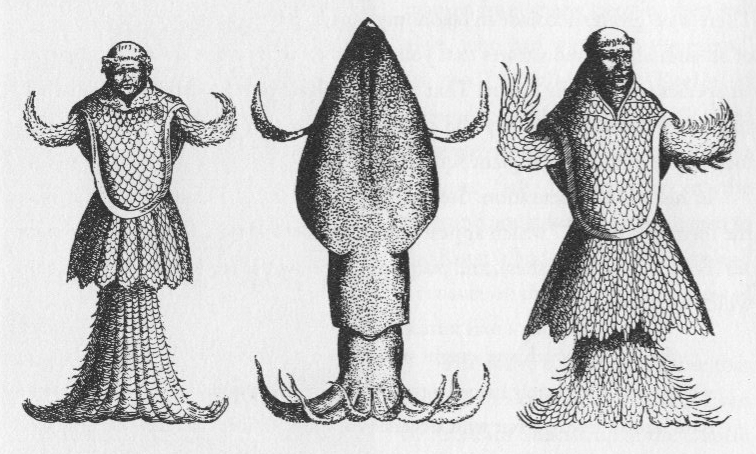
Illustration from Japetus Steenstrup’s 1854 presentation [Public domain] via Wikimedia Commons. The illustration on the left is by professor Guillaume Rondelet, and on the right by naturalist Pierre Belon, both from the 16th century. At center is an illustration of a squid caught in 1854. “Could we, given these bits of information of how the Monk was conceived at that time, come so near to it that we could recognize to which of nature’s creatures it should most probably be assigned? The Sea Monk is firstly a cephalopod.” —Japetus Steenstrup, 1854.
Skeptic Six-Day Sale 2016 (25% Off, Now Thru Cyber Monday)
NOW THROUGH CYBER MONDAY
25% off everything!
It’s our best sale of the year, on now through Cyber Monday. SAVE 25% on everything at Shop Skeptic, including: books, science lecture DVDs, clothing and other cool swag, like t-shirts and hoodies, stickers, lapel pins, Skeptic magazine subscriptions and back issues. Skeptic digital subscriptions and digital back issues are also on sale via PocketMags.com.
This sale ends at 23:59:59 Sunday, November 28, 2016 (PST).
ORDER FOR CHRISTMAS DELIVERY
Order by December 7 for shipments outside the US.
Order by December 14 for shipments inside the US.
See our Holiday Shipping page for complete details.
SAVE 25% ON PRINT & DIGITAL
subscriptions and back issues!
Print & Digital Subscriptions
4 ISSUES PER YEAR
Stephen Jay Gould called Skeptic magazine “The best journal in the field.” The definitive skeptical journal, Skeptic magazine makes a perfect gift that lasts all year (we publish 4 issues, 1 approximately every 3 months). Promoting science and critical thinking, our in-depth articles explore and inform. Buy it. Read it. Share it. Help us make the world a more rational place by defending the role of science in society! Subscribe now and save!
Print & Digital Back Issues
Skeptic magazine examines extraordinary claims, and serves as an educational tool for those seeking a sound scientific viewpoint. Don’t miss this opportunity to complete your collection by getting the back issues you’re missing in your library. Order a back issue for a friend and introduce them to skepticism! Some back issues have completely sold out in print format and will not be printed again. Most of our back issues are available in digital format via PocketMags.com.
About Digital Subscriptions & Back Issues
The 25% discount on digital subscriptions and back issues is only available through PocketMags.com, and purchase requires a free PocketMags account. After you’ve made your purchase(s), your PocketMags account allows you to synchronize your purchases to your phone or tablet by signing in to the Skeptic Magazine App (or PocketMags App) using the same username and password you used to make your purchase(s) on PocketMags.com. Questions? Email the Skeptic Webmaster.
75 Collected essays from bestselling author Michael Shermer’s celebrated columns in Scientific American
AUTOGRAPHED HARDCOVER Reg. $28. NOW $21
AUDIO CD Reg. $19.95. NOW $14.96
For fifteen years, bestselling author Michael Shermer has written a column in Scientific American magazine that synthesizes scientific concepts and theory for a general audience. His trademark combination of deep scientific understanding and entertaining writing style has thrilled his huge and devoted audience for years. Now, in SKE?TIC, seventy-five of these columns are available together for the first time; a welcome addition for his fans and a stimulating introduction for new readers.
Praise for the book
Dense with facts, convincing arguments, and curious statistics, this is an ingenious collection of light entertainment for readers who believe that explaining stuff is a good idea.
Shermer makes a strong case for the value of the scientific endeavor and the power of rational thinking in 75 brief essays…. Each entry is insightful, informative, and entertaining.
Michael Shermer is a beacon of reason in an ocean of irrationailty.
Skeptic Lapel Pin
Reg. $10. NOW $7.50
We’d like to see this lapel pin become world-famous, and we need your help to make that happen! Every skeptic (and his or her best friends) should have one of these lapel pins. They feature elegant gold-colored SKEPTIC letters, with a contrasting black background. They are a great size for a lapel or tie-tack — about 25mm × 6mm (1″ × .25″). The pin comes in a classy little plastic box suitable for gift-giving. At this price, you could get one for every jacket you own!
Don’t Believe Everything You Think
Reg. $19. NOW $14.25
This enlightening book discusses how to recognize faulty thinking and develop the necessary skills to become a more effective problem solver. Author Thomas Kida identifies the 6 basic mistakes we make in thinking that leads many of us unconsciously to accept false ideas:
- We prefer stories to statistics.
- We seek to confirm, not to question, our ideas.
- We rarely appreciate the role of chance and coincidence in shaping events.
- We sometimes misperceive the world around us.
- We tend to oversimplify our thinking.
- Our memories are often inaccurate.
Kida vividly illustrates these tendencies with numerous examples that demonstrate how easily we can be fooled into believing something that isn’t true.
The Moral Arc: How Science Makes Us Better People
In his book about moral progress, Dr. Michael Shermer demonstrates through extensive data and heroic stories that, thanks to science and reason, the arc of the moral universe bends toward truth, justice, and freedom. The Scientific Revolution was so world-changing that thinkers in other fields consciously aimed at revolutionizing the social, political, and economic worlds using the same methods of science. This led to the Age of Reason and the Enlightenment, which in turn created the modern secular world of liberal democracies, civil rights and civil liberties, equal justice under the law, open political and economic borders, and the expansion of the moral sphere to include more people—and now even animals—as worthy of moral consideration. Epic in scope, The Moral Arc is the Cosmos of human history.
Steven Pinker, author of The Better Angels of Our Nature, calls The Moral Arc “A thrilling and fascinating book, which could change your view of human history and human destiny.” Richard Dawkins, author of The God Delusion, says “The Moral Arc displays the impressive depth of Michael Shermer’s scholarship, wisdom and empathetic humanity, and it climaxes in a visionary flight of futuristic optimism. A memorable book, a book to recommend and discuss late into the night.”
The Magic of Math
A delightful assortment of examples—from ice cream scoops and poker hands to measuring mountains and magic squares—this book empowers you to see the beauty, simplicity, and magical properties behind formulas and equations that once left your head spinning. Learn key ideas of classic mathematics like: arithmetic, algebra, geometry, trigonometry, and calculus. Have fun fooling around with Fibonacci numbers, investigating infinity, and marveling over mathematical magic tricks that will make you look like a math genius!
The Skeptic’s Dictionary
The definitive short-answer debunking of nearly everything skeptical. Nearly 400 definitions, arguments, and essays on topics ranging from acupuncture to zombies. Detailed information on all things supernatural, occult, paranormal, and pseudoscientific, including: alternative medicine; cryptozoology; extraterrestrials and UFOs; frauds and hoaxes; junk science; logic and perception; New Age energy; psychics. An invaluable reference.
A Skeptic’s Guide to
Global Climate Change
Distinguish climate change skepticism from climate change denialism; get 25 answers to classic climate denier arguments; examine a summary of the scientific evidence and climate data and discover what’s behind the debate on climate change; find out why scientists think climate is changing and how we know global warming is real and human caused. This booklet has 28 pages at 8.5 × 11 inches.
The Baloney Detection Kit
This 16-page booklet, designed to hone your critical thinking skills, includes suggestions on what questions to ask, what traps to avoid, specific examples of how the scientific method is used to test pseudoscience and paranormal claims, 25 fallacies of thinking, a list of highly-recommended skeptical books, a how-to guide for developing a class in critical thinking, and more…
How to Debate a Creationist
This 28-page booklet is perfect for anyone who wants to know how to converse with a creationist. It contains 25 creationist arguments and 25 evolutionist answers (some philosophical and some scientific); describes what the theory of evolution is and isn’t and explains why creationism is not science; provides an in-depth understanding of Intelligent Design, its pitfalls and logical fallacies, and much more.
AWARD WINNING BOOKS
by the Editor of Junior Skeptic
Ankylosaur Attack!
This mind-blowing feast for the eye depicts photorealistic CGI dinosaurs in their natural environment. A young ankylosaur (a plant-eating, heavy-plated dinosaur) living along the lush banks of a lake encounters an old ankylosaur. Gently, he endeavors to make contact, only to be rebuffed. Then a T. rex attacks, and old dinosaur is in grave danger. Will the T. rex triumph? It looks that way, until the young ankylosaur comes to the rescue, tail club swinging. This is book one in the Tales of Prehistoric Life series. Dramatic stories + eye-popping visuals = a surefire hit with young dinosaur lovers.
“Even by current high standards, the full-spread art is uncommonly photorealistic.” —Kirkus Reviews
Awards for the book
- WINNER: Selected for Vancouver, British Columbia’s 2015 Reading Lights Program (2015)
- WINNER: Best Books for Kids & Teens, Canadian Children’s Book Centre (2012)
- Finalist: Silver Birch Express Award, Ontario Library Association (2013)
Pterosaur Trouble
In this science-informed followup to Ankylosaur Attack, Daniel Loxton tells a dramatic paleofiction tale of perhaps the largest flying animal ever to exist—the mighty pterosaur Quetzalcoatlus. While stalking a riverside for breakfast, the giraffe-sized pterosaur finds himself on the menu for a pack of small but ravenous feathered Velociraptor-like dinosaurs called Saurornitholestes. Can the giant escape from his Lilliputian assailants? Inspired by real-world fossil discoveries, this photorealistic adventure will delight and astonish. This is book two in the Tales of Prehistoric Life series.
“[A] riveting picture book…visually stunning…intriguing and original…an imaginative, scientifically based gem…”
Awards for the book
- WINNER: Victoria Children’s Book Prize Winner (2014)
- Finalist: Lane Anderson Award for the Canadian Science Book Prize (2013)
Plesiosaur Peril
A group of plesiosaurs—ocean-dwelling cousins of the dinosaurs—keeps safe by swimming in a family pod. But then a baby plesiosaur swims too far from its mother, attracting the attention of something very large and hungry. The struggle for survival is on! A unique blend of digital artwork and landscape photography illustrates this thrilling encounter. This is the third and final book in the Tales of Prehistoric Life series, and a Finalist for the Lane Anderson Award for Best Science Book for Young Readers in 2014.
“It is apparent from the accurate appearance of the plesiosaurs that they were thoroughly researched. …the same is true for other prehistoric creatures… ichthyosaurs, ammonites, belemnites…. They are the best I’ve seen in any book of this kind. …this is a lovely and visually striking book that makes the perfect bedtime story for any child…”
Award for the book
- Finalist: Lane Anderson Award for the Canadian Science Book Prize (2014)
Evolution: How We and All Living Things Came to Be
Can something as complex and wondrous as the natural world be explained by a simple theory? The answer is yes, and now Evolution explains how in a way that makes it easy to understand. Based on the acclaimed articles from Junior Skeptic (Skeptic magazine’s science magazine for kids), and combining lavish illustrations, breezy prose, and deep science, this spectacularly illustrated introduction to the theory of evolution (written for ages 8–13) takes us from Charles Darwin to modern-day science. Along the way, Evolution answers common questions (and clears up misunderstandings) that sometimes confuse people about the history of life on Earth. This book has been applauded by expert reviewers including the National Science Teachers Association, the American Association for the Advancement of Science, and the National Center for Science Education.
Awards for the book
- WINNER: Best Books for Kids & Teens, Starred Selection, Canadian Children’s Book Centre (2011)
- WINNER: Lane Anderson Book Award, Fitzhenry Family Foundation (2011)
- Finalist: Norma Fleck Award, Canadian Children’s Book Centre (2011)
- Finalist: Silver Birch Award, Ontario Library Association (2011)
MORE IN STORE!
Shop our entire online selection and save 25% from now through Cyber Monday
SHOW YOUR SUPPORT
Make your tax-deductible donations before the end of the year
It is time again to support your Skeptics Society. Your donations matter! Thanks to your support, 2016 has been another great year for science, skepticism, and critical thinking. We are looking forward to 2017 and are pleased to report that we have had many successes this year, which you can read about in a 4-page update from Michael Shermer, the Skeptics Society’s Executive Director.
FUNDRAISER STAR PARTY
at the Mt. Wilson Observatory in the San Gabriel Mountains overlooking Los Angeles

Click image to enlarge. The historic 60-inch telescope at the Mt. Wilson Observatory. We will be using this, or perhaps the even larger 100-inch telescope. (Photo by Heven729 (own work) [CC BY-SA 4.0], via Wikimedia Commons)
For donations of $500 or more, you are invited to join Michael Shermer at an epic Star Party at the historic Mt. Wilson Observatory where Edwin Hubble discovered the expanding universe (situated in the San Gabriel Mountains overlooking Los Angeles). We will meet for dinner at a place to be determined and then drive up Angeles Crest Highway to Mt. Wilson where we will tour the observatory grounds and spend as many hours as we like looking through one of the giant telescopes that Hubble used, and enjoy the company of fellow skeptics and science lovers. Date to be determined, likely to be in the March–May 2017 time frame for optimal weather and viewing. For reservations call our office at 1-626-794-3119. Good cause, good fun. Join us!
Ways to Make Your Tax-Deductible Donations
Your donations help your Skeptics Society—a 501(c)(3) nonprofit educational organization—to promote science and critical thinking. You can make a tax-deductible donation online using your credit card, or by downloading a printable donation card to make your donation by cheque in the mail. You may also make a donation by calling 1-626-794-3119. All donations are tax deductible.
FREE FACTSHEET DOWNLOAD
The Top 10 Myths of Terrorism
As usual, each year, we give away an informative booklet to thank you for your generous donations. This year, our free booklet examines whether terrorism is an “existential threat” to our way of life or even to our survival.
The Rise of the Use of the Term “Existential Threat”
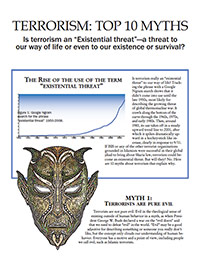
Click image to enlarge. The historic 60-inch telescope at the Mt. Wilson Observatory. We will be using this, or perhaps the even larger 100-inch telescope. (Photo by Heven729 (own work) [CC BY-SA 4.0], via Wikimedia Commons)
Is terrorism really an “existential threat” to our way of life? Tracking the phrase with a Google Ngram search shows that it didn’t come into use until the late 1950s, most likely for describing the growing threat of global thermonuclear war. It crawls along the bottom of the curve through the 1960s, 1970s, and early 1980s. Then, around 1983, its use takes off in a steady upward trend line to 2001, after which it spikes dramatically upward in a hockey-stick like increase, clearly in response to 9/11. If ISIS or any of the other terrorist organizations grounded in Islamism were successful in their global jihad to bring about Sharia law, terrorism could become an existential threat. But will they succeed? No. Here are 10 myths about terrorism that explain why. Feel free to download, print and share this 4-page booklet.
CAN’T FIND IT AT SHOP SKEPTIC?
Get it at smile.amazon.com!
If you can’t find that perfect gift in our online store, Shop Skeptic, be sure to #StartWithaSmile and buy it at smile.amazon.com. When you first sign in to smile.amazon.com, choose “Skeptic Society” as your charitable organization. Your prices at Amazon remain exactly the same, and Amazon donates 0.5% of the price of your eligible purchases to us. Thank you for your support.
eSkeptic for November 16, 2016
In this week’s eSkeptic:

Drawing The Skeptics
SKEPTICALITY EPISODE 280
In this episode of Skepticality, Derek has a conversation with Tini Howard, writer of graphic novels and former comics contributor for Paste magazine and Teen Vogue. Just a couple weeks ago Tini released her newest comic book series The Skeptics. The series is a political adventure about a pair of hip, clever teens who fool the world into believing they have superpowers. Loosely based on the real events surrounding Project Alpha and other skeptical investigation tales.

Get the Skepticality App — the Official Podcast App of Skeptic Magazine — so you can enjoy your science fix and engaging interviews on the go! Available for iOS, Android, and Windows.

It’s flu shot season again! Of all vaccines, flu shots garner the most criticism. In this week’s eSkeptic, Harriet Hall, M.D. examines flu shot facts and fallacies, reminding us that the flu vaccine is of benefit, and the more people who get the vaccine, the greater the benefit for everyone.
This article appeared in Skeptic magazine 21.2 (2016).
Flu Shots: Facts & Fallacies
by Harriet Hall, M.D.
Vaccination is one of science’s greatest accomplishments; vaccines have prevented millions of deaths and eliminated smallpox forever. But rejection of vaccination is as old as vaccination itself. Some objections to it needn’t be taken seriously, like the argument that illness and death are part of God’s plan and humans mustn’t try to thwart His will. Or the chiropractor who told me “germs don’t cause disease.” However, some objections to specific vaccines require serious scrutiny: those that are based on an interpretation of the evidence that differs from the interpretation of the experts who write the immunization guidelines.
Of all vaccines, flu shots have come in for the most criticism. There are valid reasons to be skeptical. They are the least effective of all our vaccines. The influenza virus is constantly changing, and there is a lot of guesswork involved in choosing which strains to use in each year’s vaccine. And some of the studies on which the recommendations are based are flawed.
One of the flu vaccine’s most outspoken critics is Tom Jefferson, head of the Vaccine Field Group at the Cochrane Database Collaboration. He says “Flu researchers have been fooled into thinking vaccine is more effective than the data suggest.” He is absolutely right about that. But he goes too far when he characterizes all the published research as “rubbish.” Anthony Fauci, the director of the National Institute of Allergy and Infectious Diseases, is more circumspect. He says, “I have no doubt that it is effective in conferring some degree of protection. To say otherwise is a minority view.”
The benefit to the population depends on individuals getting the vaccine. They may not benefit personally, but they indirectly benefit others by reducing transmission rates in the community and increasing herd immunity.
Flu vaccine research is problematic. As many as half of people who have “flu-like” illnesses don’t actually have influenza; there are more than 200 other pathogens that can cause the same symptoms. The risk of influenza varies from year to year according to the virulence of the circulating strains. There is often a mismatch between the circulating strains and the strains in the vaccines. Many studies have measured antibody levels rather than actual decreases in the number of cases of influenza. Measuring deaths from flu can be misleading because flu can kill indirectly by making people more susceptible to complications such as pneumonia. If they hadn’t had influenza, they wouldn’t have died of pneumonia. Jefferson says “When an old person dies of respiratory failure after an influenzalike illness, they nearly always get coded as influenza.” Of course that’s not accurate unless the diagnosis of influenza was laboratory-confirmed. By the same token, however, some deaths coded as heart attacks or pneumonia may have been due to influenza. […]
SHOP HOLIDAY ESSENTIALS
at smile.amazon.com
and Amazon donates to the Skeptics Society
The holiday season is just around the corner. Shop for all your holiday essentials including gifts, decorations, and more at smile.amazon.com and Amazon will donate to the non-profit Skeptics Society. Your prices at Amazon remain exactly the same. Thank you for your support.
Dr. Priyamvada Natarajan — Mapping the Heavens: The Radical Scientific Ideas That Reveal The Cosmos
Dr. Priyamvada Natarajan is a cosmologist and theoretical astrophysicist from Yale University, specializing in dark matter, dark energy, and black holes. She also holds the Sophie and Tycho Brahe Professorship of the Dark Cosmology Centre, Niels Bohr Institute, at the University of Copenhagen, Denmark. She is passionate about sharing science with the general public and in her new book she provides a tour of the “greatest hits” of cosmological discoveries—the ideas that reshaped our universe over the past century. The cosmos, once understood as a stagnant place, filled with the ordinary, is now a universe that is expanding at an accelerating pace, propelled by dark energy and structured by dark matter. Priyamvada Natarajan is at the forefront of this research—an astrophysicist who literally creates maps of invisible matter in the universe. In the book, she not only explains for a wide audience the science behind these essential ideas but also provides an understanding of how radical scientific theories gain acceptance. The formation and growth of black holes, dark matter halos, the accelerating expansion of the universe, the echo of the big bang, the discovery of exoplanets, and the possibility of other universes—these are some of the puzzling cosmological topics of the early twenty-first century. Natarajan discusses why the acceptance of new ideas about the universe and our place in it has never been linear and always contested even within the scientific community. And she affirms that, shifting and incomplete as science always must be, it offers the best path we have toward making sense of our wondrous, mysterious universe.
Order Mapping the Heavens: The Radical Scientific Ideas That Reveal The Cosmos from Amazon.
TAGS: astrophysics, black holes, cosmology, dark energy, dark matter, Science Salon, The Michael Shermer Show, universeeSkeptic for November 9, 2016
In this week’s eSkeptic:
SCIENCE SALON #8
Dr. Priyamvada Natarajan in conversation with Dr. Michael Shermer
4

Photo by Gabe Miller
We have 4 seats left for our November 13th Science Salon. Cosmologist and theoretical astrophysicist, Dr. Priyamvada Natarajan, speaks with Dr. Michael Shermer about her latest book, Mapping the Heavens: The Radical Scientific Ideas That Reveal The Cosmos, followed by an intimate conversation with the audience that allows more interaction with the guest than a formal Q&A.
Call 1-626-794-3119 now to reserve your seat(s).
WATCH THE LIVE STREAM: This event will be streamed lived starting at 2pm PST.
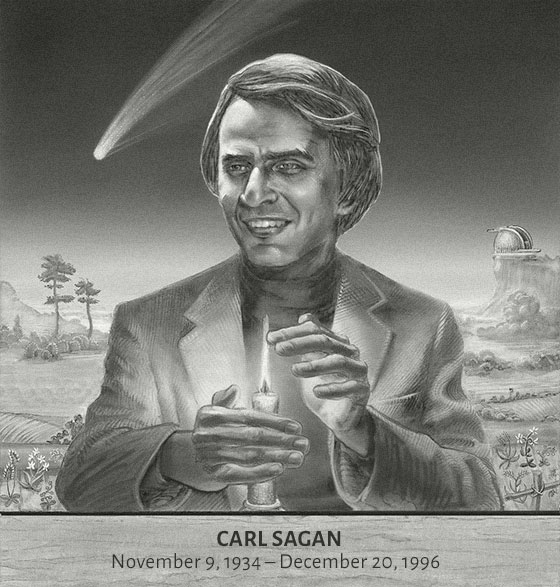
On this, November 9th, the day of Carl Sagan’s birthday (1934), we celebrate and remember the man whose contributions and commitment to furthering the work of scientific skepticism have helped make the world a more rational place.
The following is a transcript from the video Carl Sagan: A Way of Thinking, posted on the YouTube Channel Inspiration Journey. The audio is derived from an interview between Carl Sagan and Charlie Rose. Watch the video below.
Carl Sagan — A Way of Thinking
Sagan: It’s not that pseudoscience and superstition and new-age (so called) beliefs and fundamentalist zealotry are something new. They’ve been with us for as long as we’ve been human. But, we live in an age based on science and technology with formidable technological powers.
Interviewer: Science and technology are propelling us forward at accelerating rates.
Sagan: That’s right. And if we don’t understand it — and, by we, I mean the general public — if it’s something that “Oh, I’m not good at that. I don’t know anything about it…” then who is making all the decisions about science and technology that are going to determine what kind of future our children live in?
Interviewer: What’s the danger of all this?
Sagan: There are two kinds of dangers. One is what I just talked about: that we’ve arranged a society based on science and technology, in which nobody understands anything about science and technology. And this combustable mixture of ignorance and power, sooner or later, is gonna blow up in our faces. And the second reason that I’m worried about this is that science is more than a body of knowledge. It is a way of thinking; a way of skeptically interrogating the universe with a fine understanding of human fallibility. If we are not able to ask skeptical questions, to interrogate those who tell us that something is true, to be skeptical of those in authority, then, we are up for grabs for the next charlatan (political or religious) who comes ambling along. It’s a thing the Jefferson laid great stress on. It wasn’t, he said, to enshrine, some rights in a constitution or bill of rights. The people had to be educated, and they had to practice their skepticism and education. Otherwise, we don’t run the government; the government runs us. You see, people read stock market quotations and financial pages. Look how complex that is. People are able to look at sports statistics. Look how many people can do that. Understanding science is not more difficult than that. It doesn’t involve greater intellectual activities. But, the thing about science is, first of all, it’s after the way the universe really is, and not what makes us feel better. And, a lot of the competing doctrines are after what feels good and not what’s true.
Interviewer: Science does not prove religion, because religion is faith-based.
Sagan: Let’s look at a little more deeply into that. What is faith? It is belief in the absence of evidence. No, I don’t propose to tell anybody what to believe. But, for me, believing when there is no compelling evidence, is a mistake. The idea is to withhold belief until there is compelling evidence. And, if the universe does not comply with our predispositions, OK. Then, we have the wrenching obligation to accommodate to the way the universe really is. So, who is more humble? The scientist who looks at the universe with an open mind and accepts whatever the universe has to teach us? Or, somebody who says everything in this book must be considered the literal truth, and never mind the fallibility of all the human beings involved in the writing this book?
I lost both my parents about 12 or 15 years ago. I had a great relationship with them. I really miss them. I would love to believe that their spirits are around somewhere. And, I’d give almost anything to spend five minutes a year with them.
Interviewer: Do you hear their voices ever?
Sagan: Sometimes. About six or eight times since their death, I’ve heard “Carl!” just in the voice of my father or my mother. Now, I don’t think that means that they’re in the next room. I think it means that I’ve had an auditory hallucination about it. I was with them for so long. I heard their voices so often. Why shouldn’t I be able to make a vivid recollection?
Interviewer: Here’s what’s interesting about this for me. You convinced me a long time ago that it was arrogant for me, or for anyone else, to exclude the possibility that there wasn’t some life outside our own, was an arrogance of intellect, that we should not assume. You couldn’t prove it, you didn’t know it was there, but the arrogance…
Sagan: Right. We don’t know if it’s there. We don’t know if it’s not there. Let’s look!
Interviewer: And, if you take that, why can’t you say “There is a lot we don’t know!”?
Sagan: I say it. Watch. There’s a lot we don’t know. That’s what I believe. But that doesn’t mean that every fraudulent claim has to be accepted. We demand the most rigorous standards of evidence, especially on what’s important to us. So, if some guy comes up to me — a channeler or a medium — and says “I can put you in touch with your parents,” well, because I want so terribly to believe that, I know I have to reach in for added reserves of skepticism, because I’m likely to be fooled, and much more minor, to have my money taken.
Interviewer: You are living with myelodysplasia.
Sagan: …or, I have been.
Interviewer: You have been. Just share with us, because of your sense of language and your sense of understanding, what do you think about it and what does it do for you…?
Sagan: I didn’t have any near death experiences. I didn’t have a religious conversion.
Interviewer: But you thought about what it would be like to die.
Sagan: Certainly, and what it would be like for my family, and I didn’t much think about what it would be like for me because I don’t think it’s likely there’s anything that you think about after you’re dead. That’s it. A long dreamless sleep. I’d love to believe the opposite, but I don’t have any evidence. But one thing that it has done is to enhance my sense of appreciation for the beauty of life, and of the universe, and the sheer joy of being alive.
Interviewer: You had a healthy portion of that before this, but even you, it happens to: appreciation.
Sagan: Every moment. Every inanimate object, to say nothing about the exquisite complexity of living beings… You imagine missing it all, and suddenly, it’s so much more precious.
NEW EPISODE
The God Distraction, Chapter Three: The Word of God
This is the third video in Mr. Deity’s new series: The God Distraction. If you missed them, you might want to first watch Chapter One: Arguments and Chapter Two: The Unknowable. In Chapter Three: The Word of God, Mr. Deity asks whether the Bible gives us any reliable knowledge of God or His will.
FOLLOW MR. DEITY
DONATE • PATREON • FACEBOOK • VIMEO • MRDEITY.COM
SHOP HOLIDAY ESSENTIALS
at smile.amazon.com
and Amazon donates to the Skeptics Society
The holiday season is just around the corner. Shop for all your holiday essentials including gifts, decorations, and more at smile.amazon.com and Amazon will donate to the non-profit Skeptics Society. Your prices at Amazon remain exactly the same. Thank you for your support.
eSkeptic for October 26, 2016
In this week’s eSkeptic:
STOCK UP FOR HALLOWEEN
at smile.amazon.com
and Amazon donates to the Skeptics Society
Halloween is lurking just around the corner. Shop for your treats, costumes, and decorations at smile.amazon.com and Amazon will donate to the non-profit Skeptics Society. Your prices at Amazon remain exactly the same. Thank you for your support.
Yetipalooza
MONSTERTALK EPISODE 116
In this week’s episode of MonsterTalk, Eugenie Scott, Brian Regal, and Daniel Loxton join Karen Stollznow and Blake Smith to discuss The Yeti. This episode was our first-ever dedicated Yeti talk, as well as our first-ever live streamed show, which aired on YouTube on Sunday, October 23, 2016 at 8 pm EST.
Get the MonsterTalk Podcast App and enjoy the science show about monsters on your handheld devices! Available for iOS, Android, and Windows 8 devices. Subscribe to MonsterTalk for free on iTunes. Follow the RSS feed.

Dream On
SKEPTICALITY EPISODE 279
This episode of Skepticality begins with a touching message about a friend of the show, and past Skepticality contributor, Bob Carroll. Then Derek talks with comedian, talk show host, and political commentator, John Fugelsang about Dream On, a PBS documentary about the American Dream, and a road trip across the country to find out if it is still alive.

John Fugelsang
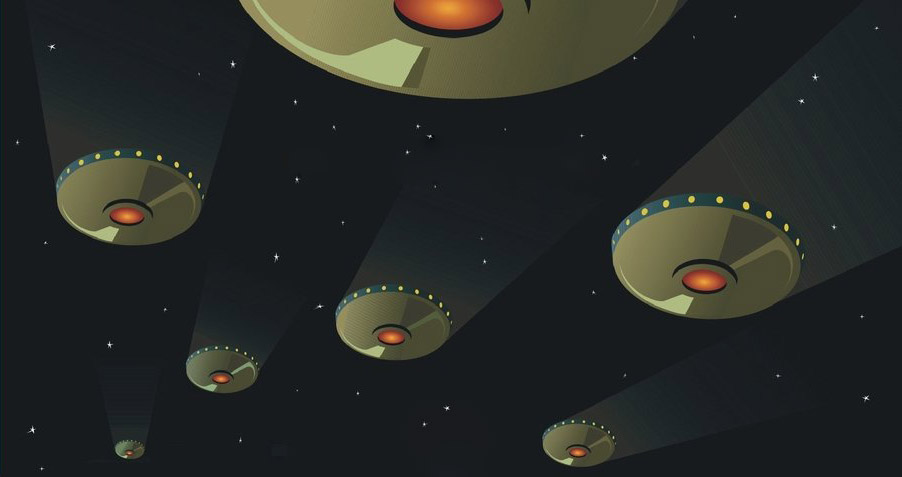
If intelligent life exists elsewhere in the universe, how should we interact, and what will it mean for our civilization? In this week’s eSkeptic, Lawrence E. Grinter reviews Preparing for Contact: When Humans and Extraterrestrials Finally Meet (2014), by George Michael. This review appeared in Skeptic magazine 20.4 (2015).
Meeting ET
by Lawrence E. Grinter
In Preparing for Contact George Michael has given us a tour de force exploration of the thinking, issues, and dilemmas surrounding the search for extraterrestrial life in the universe.
Those familiar with Professor Michael’s other books and articles—on a wide variety of critical topics including politics, nuclear proliferation, science, and terrorism—know that he conducts rigorous research and major scholarly inventories before completing a manuscript. Preparing for Contact clearly represents years of thinking and research on the subject. Michael’s approach is meticulous, objective, and fearless in examining every relevant aspect—historical, current, and futuristic—of the alien civilization question. The book dives into fundamental questions. First, what have been the scientific (or otherwise) endeavors to consider if intelligent life might exist elsewhere in the universe? Second, if we do make contact with an alien civilization, how should we respond, and what might be the larger implications for our civilization?
Preparing for Contact has a logical chapter progression. From early speculation about extraterrestrial life, including Egyptian, Roman, Hindu, and Central American civilizations’ speculations to the recent findings of astrobiology and astronomy, to the UFO phenomenon, and the SETI (Search for Extraterrestrial Intelligence) project, Michael proceeds in systematic fashion. Regarding possible life on Mars, for example, the Swiss author Erich von Däniken’s wildly popular book, Chariots of the Gods, became a US television film. However, its assumptions of alien life on Mars were disproven after successive probes of Mars found only natural structures, not artificial ones. Additional space probes make us confident that we are the only intelligent life in this solar system. But what about farther out in the Milky Way galaxy, among the thousands of exoplanets which are being discovered at a rate of about two a week?
Before delving into the implications of a possible extraterrestrial contact from beyond the Earth’s solar system, Michael notes that our own planet’s civilization is still relatively young in one key criterion, viz., namely our ability to harness energy. We are still largely dependent on planetary sources such as coal, oil and gas, and only recently have sought to capture solar energy. Intriguingly, should Earth encounter an alien civilization, it is likely that the aliens could be technologically far superior to us, with an advanced ability to harness energy concomitant with military superiority as well. […]
eSkeptic for October 19, 2016
In this week’s eSkeptic:

Medical Nonsense
SKEPTICALITY EPISODE 278
There are a lot of misconceptions about what constitutes effective medicine. In this episode of Skepticality, Derek speaks with emergency room doctor Angie Feazel Mattke who reveals some of the most common (and sometimes funny) treatments that patients say they have tried when they visit doctors’ offices and emergency rooms. Mattke gave a talk at Dragon Con aimed at explaining just how ubiquitous these “unscientific” medical ideas have become.

MonsterTalk Meets The Lovecraft Geek
MONSTERTALK EPISODE 115
A special for the Halloween Season, Robert Price returns to MonsterTalk to give us a raw dripping sample of his podcast The Lovecraft Geek, a kind of secular version of his popular The Bible Geek podcast. Questions from listeners are tossed down into the well of Price’s vast knowledge to see what answers echo back up to drive us mad. Check out our episode notes for lots of links to Lovecraft-inspired books and movies.
MONSTERTALK LIVE STREAM EVENT
Sunday, October 23, 2016 at 8 pm EST
Join us for our first ever MonsterTalk live streaming event. Scheduled guests Eugenie Scott, Brian Regal, Daniel Loxton will join Karen and me to discuss The Yeti. So this will be our first dedicated Yeti talk, and our first live streaming show. I hope you can join us.
How do you attend? A link to the show is pinned at our Facebook page, and will be on our website at monstertalk.org. There’s also this short link that is (hopefully) easy to remember: http://bit.ly/monstertalklive2016
We’ll make the audio of that available in the podcast feed, and the resulting video should be posted to YouTube if it all works according to plan.
SCIENCE SALON #8
Dr. Priyamvada Natarajan in conversation with Dr. Michael Shermer
18

Photo by Gabe Miller
We have 18 seats left for our November 13th Science Salon. Cosmologist and theoretical astrophysicist, Dr. Priyamvada Natarajan, speaks with Dr. Michael Shermer about her latest book, Mapping the Heavens: The Radical Scientific Ideas That Reveal The Cosmos, followed by an intimate conversation with the audience that allows more interaction with the guest than a formal Q&A.
Call 1-626-794-3119 now to reserve your seat(s).
IMPORTANT TICKET INFORMATION: Advance tickets are required. Tickets will not be sold at the door. $50 per individual (includes a reserved seat, autographed copy of the guest’s book, hors d’oeuvres and wine).
MAPPING THE HEAVENS
The Radical Scientific Ideas That Reveal The Cosmos
Dr. Priyamvada Natarajan is a cosmologist and theoretical astrophysicist from Yale University, specializing in dark matter, dark energy, and black holes. She also holds the Sophie and Tycho Brahe Professorship of the Dark Cosmology Centre, Niels Bohr Institute, at the University of Copenhagen, Denmark. She is passionate about sharing science with the general public and in her new book she provides a tour of the “greatest hits” of cosmological discoveries—the ideas that reshaped our universe over the past century. The cosmos, once understood as a stagnant place, filled with the ordinary, is now a universe that is expanding at an accelerating pace, propelled by dark energy and structured by dark matter. Priyamvada Natarajan is at the forefront of this research—an astrophysicist who literally creates maps of invisible matter in the universe. In the book, she not only explains for a wide audience the science behind these essential ideas but also provides an understanding of how radical scientific theories gain acceptance. The formation and growth of black holes, dark matter halos, the accelerating expansion of the universe, the echo of the big bang, the discovery of exoplanets, and the possibility of other universes—these are some of the puzzling cosmological topics of the early twenty-first century. Natarajan discusses why the acceptance of new ideas about the universe and our place in it has never been linear and always contested even within the scientific community. And she affirms that, shifting and incomplete as science always must be, it offers the best path we have toward making sense of our wondrous, mysterious universe.
Order Mapping the Heavens: The Radical Scientific Ideas That Reveal The Cosmos from Amazon.
Call 1-626-794-3119 now to reserve.
Dr. Benjamin Bergen — What the F: What Swearing Reveals About Our Language, Our Brains, and Ourselves
Dr. Benjamin Bergen is a professor of cognitive science at the University of California, San Diego, and in his new book he explains why profanity is so appealing to us. Let’s face it, we all swear. Whether we’re happy or mad, uttering a four-letter word seems to be a natural occurrence for most of us. But why do we swear, even when we know we’re breaking cultural taboos? Why are some words off limits in certain countries or deemed offensive in past centuries but are considered perfectly tame in others? What does all this g*ddamn swearing tell us about our language and our brains? Bergen has the answers as he illuminates the controversial and complex nature of profanity and its relationship on our culture.
Order What the F: What Swearing Reveals About Our Language, Our Brains, and Ourselves from Amazon.
TAGS: culture, language, profanity, Science Salon, The Michael Shermer ShoweSkeptic for October 12, 2016
In this week’s eSkeptic:
Demon Dolls
MONSTERTALK EPISODE 114
In this week’s episode of MonsterTalk, we talk about demonic or evil dolls, and look into the history of one of America’s most famous creepy playthings: Robert the Doll. Our interview is with Dr. Cori Convertito, Curator of the Key West Art and Historical Society, which oversees the Fort East Martello Museum, home of Robert the Doll.

Robert The Doll (uploaded by LongLiveRock), by Cayobo from Key West, The Conch Republic [CC BY 2.0], via Wikimedia Commons
Get the MonsterTalk Podcast App and enjoy the science show about monsters on your handheld devices! Available for iOS, Android, and Windows 8 devices. Subscribe to MonsterTalk for free on iTunes. Follow the RSS feed.
SCIENCE SALON #8
Dr. Priyamvada Natarajan in conversation with Dr. Michael Shermer
18

Photo by Gabe Miller
We have 18 seats left for our November 13th Science Salon. Cosmologist and theoretical astrophysicist, Dr. Priyamvada Natarajan, speaks with Dr. Michael Shermer about her latest book, Mapping the Heavens: The Radical Scientific Ideas That Reveal The Cosmos, followed by an intimate conversation with the audience that allows more interaction with the guest than a formal Q&A.
Call 1-626-794-3119 now to reserve your seat(s).
IMPORTANT TICKET INFORMATION: Advance tickets are required. Tickets will not be sold at the door. $50 per individual (includes a reserved seat, autographed copy of the guest’s book, hors d’oeuvres and wine).
MAPPING THE HEAVENS
The Radical Scientific Ideas That Reveal The Cosmos
Dr. Priyamvada Natarajan is a cosmologist and theoretical astrophysicist from Yale University, specializing in dark matter, dark energy, and black holes. She also holds the Sophie and Tycho Brahe Professorship of the Dark Cosmology Centre, Niels Bohr Institute, at the University of Copenhagen, Denmark. She is passionate about sharing science with the general public and in her new book she provides a tour of the “greatest hits” of cosmological discoveries—the ideas that reshaped our universe over the past century. The cosmos, once understood as a stagnant place, filled with the ordinary, is now a universe that is expanding at an accelerating pace, propelled by dark energy and structured by dark matter. Priyamvada Natarajan is at the forefront of this research—an astrophysicist who literally creates maps of invisible matter in the universe. In the book, she not only explains for a wide audience the science behind these essential ideas but also provides an understanding of how radical scientific theories gain acceptance. The formation and growth of black holes, dark matter halos, the accelerating expansion of the universe, the echo of the big bang, the discovery of exoplanets, and the possibility of other universes—these are some of the puzzling cosmological topics of the early twenty-first century. Natarajan discusses why the acceptance of new ideas about the universe and our place in it has never been linear and always contested even within the scientific community. And she affirms that, shifting and incomplete as science always must be, it offers the best path we have toward making sense of our wondrous, mysterious universe.
Order Mapping the Heavens: The Radical Scientific Ideas That Reveal The Cosmos from Amazon.
Call 1-626-794-3119 now to reserve.
Uncertainty is the latest in a series of exhibitions exploring the intersection of science and art at ArtCenter’s Williamson Gallery, in Pasadena, California. Nine installations authored by artists and scientists have been assembled for an exhibition that ponders the edges of knowledge and perception, explores the poetics of data visualization, and immerses viewers in the uncertainty/certainty paradigm.
In association with the Uncertainty exhibition, the public is invited to a free lecture “The Thinking Eye” by Edward Tufte on Thursday, October 20, at 7pm, in ArtCenter’s Hillside Campus Ahmanson Auditorium. A wine reception and viewing of Uncertainty will follow Tufte’s lecture.

During weekend events October 20–23, Nobel Laureate Physicist Richard Feynman’s (1918–1988) restored ’75 Dodge van covered with Feynman Diagrams will be on display outside the Williamson Gallery.

Brain-Training Claims Not Backed by Science, Report Shows
In our health-conscious culture permeated by people eating kale, meditating, and working out, it seems tempting to regard the brain as just another muscle—one whose relevant parts can be “exercised” to keep them from getting flabby and plump. In this week’s eSkeptic, Dr. Carol Tavris examines the evidence to see if working memory training programs really work.
Can Working Memory Be Trained to Work Better?
by Carol Tavris
I hate writing this issue’s column. Sometimes it is really annoying to have to review information you don’t want to hear, but it’s my moral and scientific obligation to do it, so you don’t have to. Like most of humanity over the age of 37,1 I have been awaiting the scientific discoveries that will improve my memory. In my lifetime, I have seen enough of these to realize that memory-improvement advice generally depends on whatever model of memory is current at the time. When people erroneously believed that memories were “filed away,” the solution was to improve our card-catalog system. When people erroneously believed that memories were recorded as if on tapes, the solution was to find a way to rewind them (and remove the dust and scratches). When people erroneously believed that memories were “buried,” like pirate treasure or potatoes, the solution was to find ways to “uproot” them. Some of these memory-improvement methods were benign; others, like “recovered memory therapy,” hypnosis, and truth serum, had malevolent consequences that destroyed many lives and families. I am sympathetic to the desire to improve our muddy memories and restore forgotten ones. We are our memories.
There is no good evidence that working memory training improves intelligence test scores or other measures of ‘real-world’ cognitive skills.
Today, in our health-conscious culture permeated by people eating kale, meditating, and working out, it seems tempting to regard the brain as just another muscle, one whose relevant parts can be “exercised” to keep them from getting flabby and plump. Memory exercises and meditation to the rescue! Puzzles, games, and challenges are today’s mental weights.
In recent decades, memory scientists have revved up their study of “working memory,” one of the key mental systems responsible for storing and manipulating information. Working memory is a cognitively complex form of short-term memory—that little bin where we store a new phone number until we use it once or enter it in our contacts list. Working memory is where, well, the work gets done: it involves active mental processes that control retrieval of information from long-term memory and interpret that information appropriately for a given task. No wonder that people who do well on tests of working memory tend to do well on intelligence tests and on tasks requiring complex cognition and the control of attention, such as understanding what they read, following directions, taking notes, learning new words, estimating how much time has elapsed, and many other real-life tasks. When they are engrossed in challenging activities that require concentration and effort, they stay on task longer, and their minds are less likely than other people’s to wander. […]
eSkeptic for October 5, 2016
In this week’s eSkeptic:

21ST CENTURY ETHICS
How Science, Reason and Empathy are Bringing a Kinder, more Realistic Morality
War, terrorism, racial oppression—is there any hope for humanity? Author and educator Michael Shermer will attempt to answer that question and others at the next Richard W. Smith Lecture in Cultural Studies on October 5, 2016 at California State University, Northridge.
The lecture, hosted by CSUN’s College of Social and Behavioral Sciences, will include a discussion of Shermer’s latest book, The Moral Arc, which explores why he believes there is indeed hope for humanity. The event will take place at 7 p.m. in the Whitsett Room, Sierra Hall 451, located on the west side of campus at 18111 Nordhoff St. in Northridge.
“As a result of Richard Smith’s generosity, the College of Social and Behavioral Sciences is able to bring to campus speakers of the quality of Michael Shermer,” said Stella Theodoulou, dean of the college. “[Shermer] provokes discussion around topics such as morality and justice that are far more than philosophical concepts, but are applicable to our everyday real life.”
Shermer has taught courses such as psychology and the history of science for more than 30 years at multiple universities. He is currently an adjunct professor at Chapman University, host of Science Salon (and previously of the Skeptics Distinguished Lecture Series at California Institute of Technology) and teaches a transdisciplinary course for Ph.D. students at Claremont Graduate University. He is known for creating Skeptic magazine, and he serves as executive director of the Skeptics Society. Skeptic magazine seeks to give a sound and scientific viewpoint about revolutionary ideas and extraordinary claims. Shermer has appeared on TV shows such as the Oprah Winfrey Show, the Colbert Report and 20/20. He was a co-host and producer for the series “Exploring the Unknown.”
The Moral Arc, which was published in 2015, reveals how science and rational thinking helped eliminate myths that societies once embraced. For example, a few centuries ago, humans were sacrificed to help calm weather gods. Today, meteorology explains different weather patterns, such as hurricanes and tornados.
Fifty years ago, students of different ethnic groups did not have access to the same level of education and were not allowed to learn in the same classrooms as whites. Today, there are classrooms full of diversity.
Shermer admits that society has a long way to go, but reflecting on the progress that has been made, he thinks it is heading in the right direction.
There will be a book signing and a small reception following the lecture.
For more information, call 1-818-677-7169 or email [email protected].
FOLLOW MICHAEL SHERMER ON
Twitter • Facebook • Insight • The Moral Arc Blog

SCIENTIFIC AMERICAN “SKEPTIC” COLUMN FOR OCTOBER 2016
Methuselah’s Moon Shot: Can science and Silicon Valley defeat death?
Toward the end of his life, in an essay entitled “Topic of Cancer” in 2010 in Vanity Fair, Christopher Hitchens answered his own rhetorical query poignantly: “To the dumb question ‘Why me?’ the cosmos barely bothers to return the reply: Why not?”
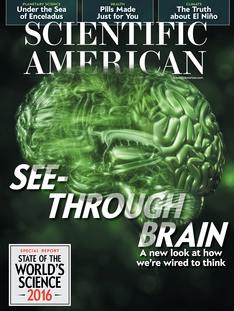
The cosmos has never been particularly loquacious with its intentions, often requiring Brobdingnagian-sized ventures—from particle accelerators and space telescopes to genome and connectome projects—to tease out its deepest secrets. Can the same be done for death? A number of scientists and Silicon Valley billionaires think it can.
Oracle co-founder Larry Ellison, for example, has given more than $430 million toward antiaging research because he finds the quiet acquiescence of mortality “incomprehensible.” XPRIZE entrepreneur Peter H. Diamandis co-founded Human Longevity, which, in conjunction with StartUp Health, launched the Longevity Moonshot, whose mission is “to extend and enhance healthy life by 50+ years and change the face of aging.”
Google co-founder Larry Page launched a biotech company called Calico, which aims to extend the human life span by a century. Calling it “a longer-term bet,” Page said he was confident they “can make good progress within reasonable timescales with the right goals and the right people.” One of those people is Ray Kurzweil, the scientist and futurist (and now a director of engineering at Google) who thinks that if we can survive until the 2040s, we can “live long enough to live forever.” […]
FOLLOW MICHAEL SHERMER ON
Twitter • Facebook • Insight • The Moral Arc Blog
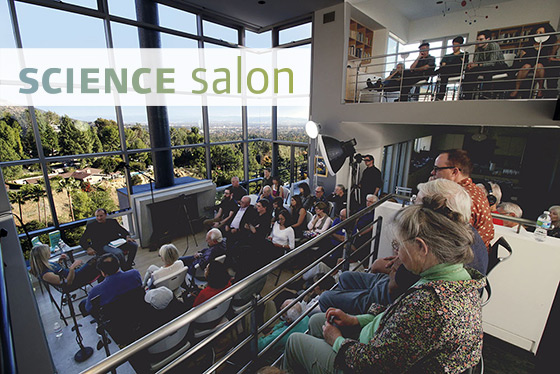
About Science Salon
In the tradition of the Enlightenment salons that helped drive the Age of Reason and the public interest in science, the Skeptics Society is pleased to announce the next two intimate Science Salons featuring an “in conversation” between Dr. Michael Shermer and professor of cognitive science, Dr. Benjamin Bergen (October 16) and cosmologist and theoretical astrophysicist, Dr. Priyamvada Natarajan (November 13). Dr. Shermer will discuss the guest’s latest science book or research project in a dialogue format, followed by an intimate conversation with the audience that allows more interaction with the guest than a formal Q&A.
IMPORTANT TICKET INFORMATION: Advance tickets are required. Tickets will not be sold at the door. Purchase by calling the Skeptics Society office at 1-626-794-3119. Seating is limited. $50 per individual (includes a reserved seat, autographed copy of the guest’s book, hors d’oeuvres and wine).
WHAT THE F
What Swearing Reveals About Our Language, Our Brains, and Ourselves
Dr. Benjamin Bergen is a professor of cognitive science at the University of California, San Diego, and in his new book he explains why profanity is so appealing to us. Let’s face it, we all swear. Whether we’re happy or mad, uttering a four-letter word seems to be a natural occurrence for most of us. But why do we swear, even when we know we’re breaking cultural taboos? Why are some words off limits in certain countries or deemed offensive in past centuries but are considered perfectly tame in others? What does all this g*ddamn swearing tell us about our language and our brains? Bergen has the answers as he illuminates the controversial and complex nature of profanity and its relationship on our culture.
Order What the F: What Swearing Reveals About Our Language, Our Brains, and Ourselves from Amazon.
Call 1-626-794-3119 now to reserve.
MAPPING THE HEAVENS
The Radical Scientific Ideas That Reveal The Cosmos
Dr. Priyamvada Natarajan is a cosmologist and theoretical astrophysicist from Yale University, specializing in dark matter, dark energy, and black holes. She also holds the Sophie and Tycho Brahe Professorship of the Dark Cosmology Centre, Niels Bohr Institute, at the University of Copenhagen, Denmark. She is passionate about sharing science with the general public and in her new book she provides a tour of the “greatest hits” of cosmological discoveries—the ideas that reshaped our universe over the past century. The cosmos, once understood as a stagnant place, filled with the ordinary, is now a universe that is expanding at an accelerating pace, propelled by dark energy and structured by dark matter. Priyamvada Natarajan is at the forefront of this research—an astrophysicist who literally creates maps of invisible matter in the universe. In the book, she not only explains for a wide audience the science behind these essential ideas but also provides an understanding of how radical scientific theories gain acceptance. The formation and growth of black holes, dark matter halos, the accelerating expansion of the universe, the echo of the big bang, the discovery of exoplanets, and the possibility of other universes—these are some of the puzzling cosmological topics of the early twenty-first century. Natarajan discusses why the acceptance of new ideas about the universe and our place in it has never been linear and always contested even within the scientific community. And she affirms that, shifting and incomplete as science always must be, it offers the best path we have toward making sense of our wondrous, mysterious universe.
Order Mapping the Heavens: The Radical Scientific Ideas That Reveal The Cosmos from Amazon.
Call 1-626-794-3119 now to reserve.

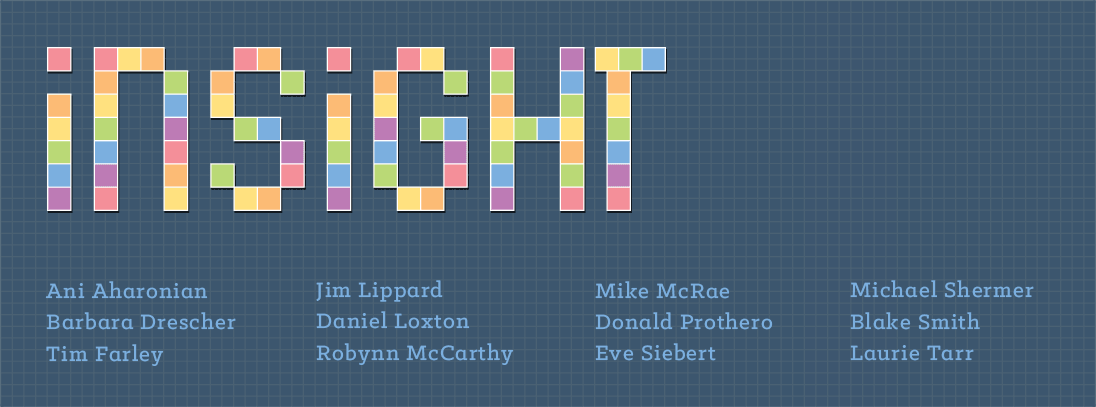
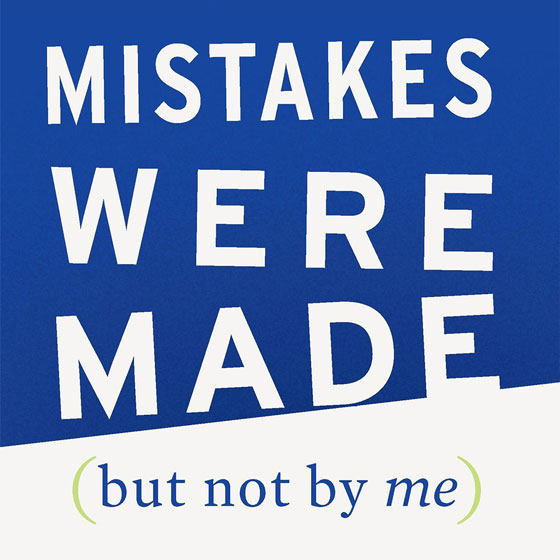
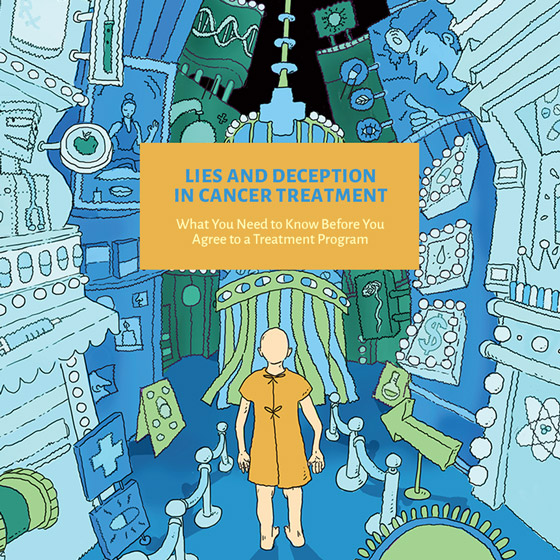

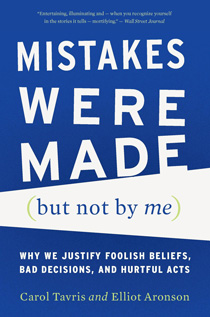
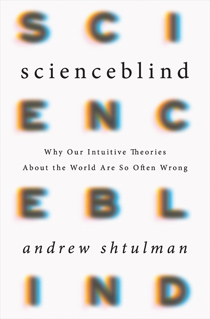
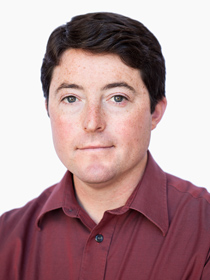
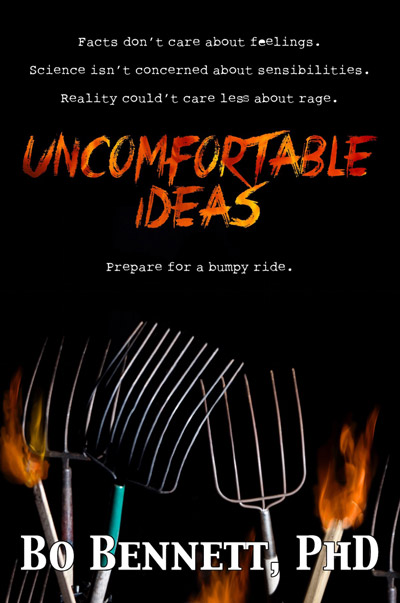
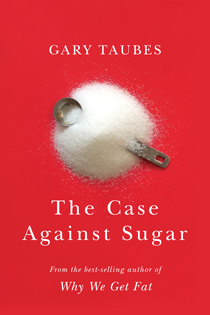





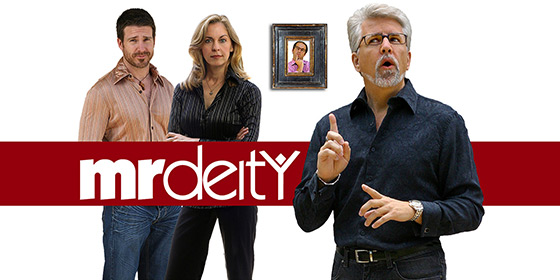


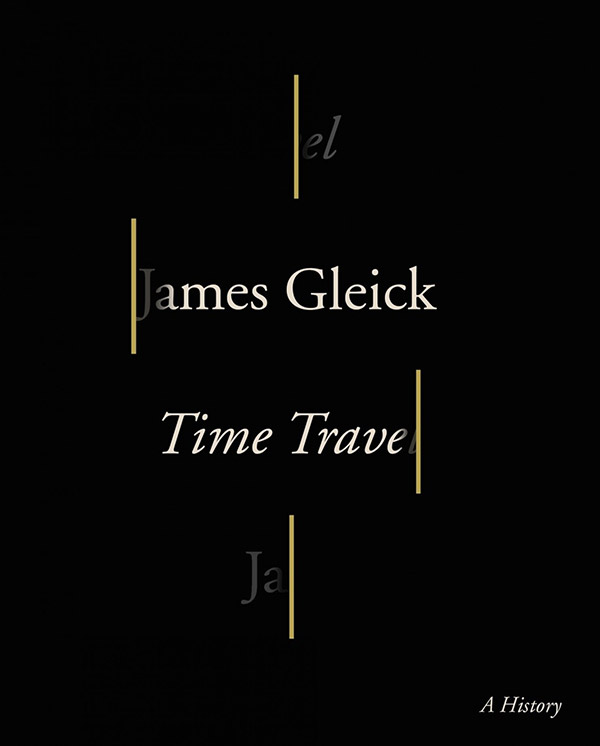

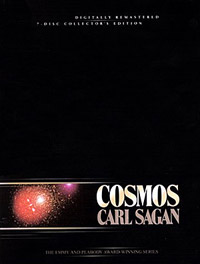
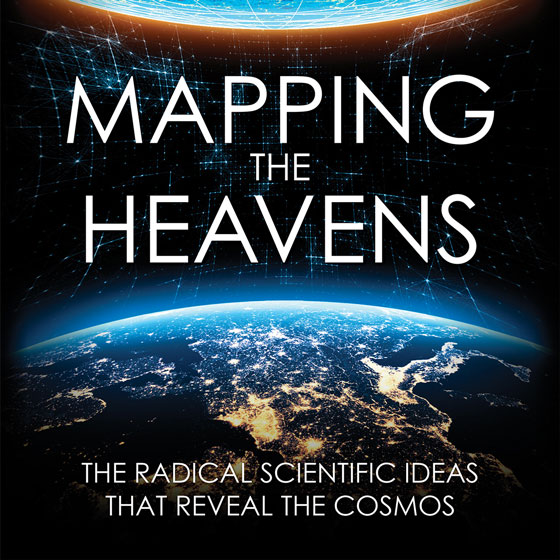

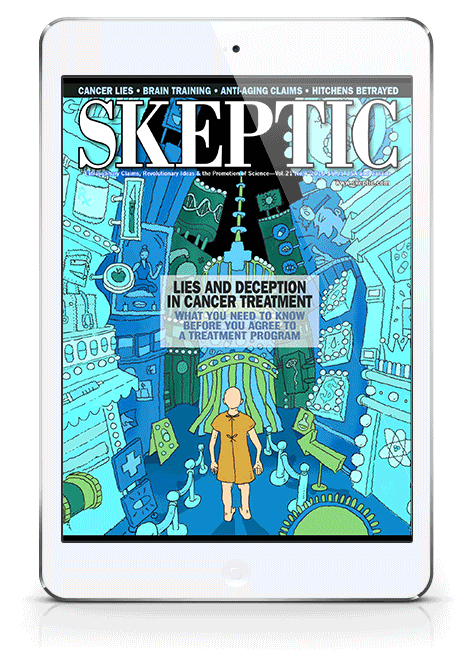
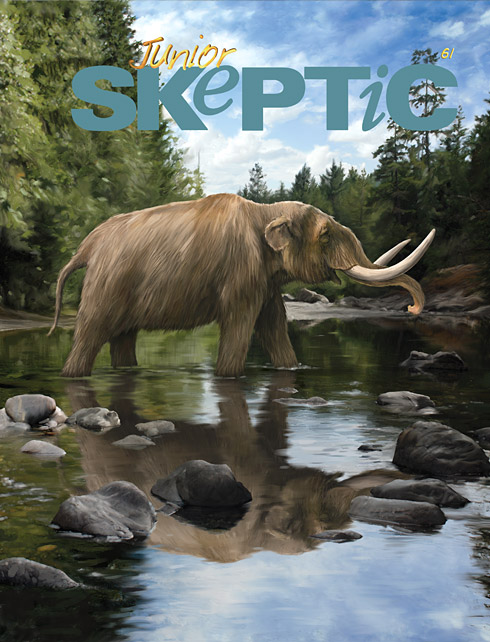
![Pitt Rivers Museum Interior, Oxford, England, by Diliff (own work) [CC BY-SA 3.0 (http://creativecommons.org/licenses/by-sa/3.0) or GFDL (http://www.gnu.org/copyleft/fdl.html)], via Wikimedia Commons](https://www.skeptic.com/geology_tours/2017/UK-Natural-History-and-Zoology/images/Pitt_Rivers_Museum_Interior_Oxford_UK_by_Diliff.jpg)
![Chamaeleon at the Bristol Zoo, by Airwolfhound from Hertfordshire, UK [CC BY-SA 2.0], via Wikimedia Commons](https://www.skeptic.com/geology_tours/2017/UK-Natural-History-and-Zoology/images/chameleon-Bristol-Zoo-by-Airwolfhound.jpg)
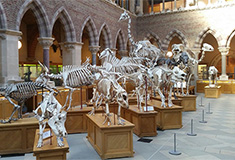
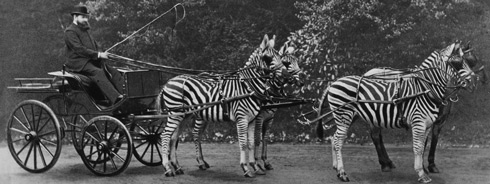
![Stan (Tyrannosaurus rex) cast at the Oxford University Museum of Natural History, by Ballista at the English language Wikipedia [GFDL or CC-BY-SA-3.0], via Wikimedia Commons](https://www.skeptic.com/geology_tours/2017/UK-Natural-History-and-Zoology/images/stan-t-rex-Oxford-Museum.jpg)
![Northern rockhopper penguin (Eudyptes c. moseleyi) in ZSL London Zoo, by Katie Chan (own work) [CC BY-SA 4.0 (http://creativecommons.org/licenses/by-sa/4.0)], via Wikimedia Commons](https://www.skeptic.com/geology_tours/2017/UK-Natural-History-and-Zoology/images/northern-rockhopper-penguin-ZSL-London.jpg)
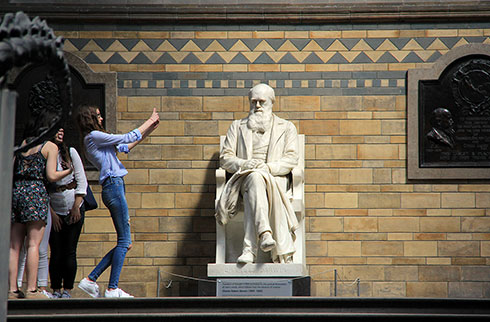
![A sumatran tiger at Chester Zoo, by Brian McKay (Flickr) [CC BY 2.0], via Wikimedia Commons](https://www.skeptic.com/geology_tours/2017/UK-Natural-History-and-Zoology/images/sumatran-tiger-Chester-Zoo.jpg)

